

General Coordination of Ports and Merchant Marine
Leading Mexico’s ports to a successful future

New Member Profiles
The ports of Mexico’s West Coast
New Member Profile
APP welcomes the Port of Everett




General Coordination of Ports and Merchant Marine
Leading Mexico’s ports to a successful future

New Member Profiles
The ports of Mexico’s West Coast
New Member Profile
APP welcomes the Port of Everett

With a world-class labor force, fast turn times, superior customer service, and quick connections to major roads and rail hubs, the Port of Long Beach is the premier West Coast gateway for trans-Pacific trade.
More than 100 tankers loaded since May 2024*

The expansion at Trans Mountain’s marine oil export facility is complete and our newly commissioned modern three-berth dock complex is receiving tankers. We are efficiently loading vessels for overseas destinations, showcasing the terminal’s increased capacity to connect Canada’s resources with global markets.
Strategically located in the Port of Vancouver on Canada’s West Coast, Westridge Marine Terminal is committed to safe and efficient oil cargo transfers and vessel turnaround. With the Expansion Project complete, Trans Mountain is now well-positioned to meet the growing demands of the international oil market.
To learn more about the terminal, visit transmountain.com.
For shipping via Westridge, visit transmountain.com/shipper-services.
*October 2024


A BIG THANKS TO OUR HOST AND SPONSORS OF THE APP’S 110TH ANNUAL CONFERENCE!
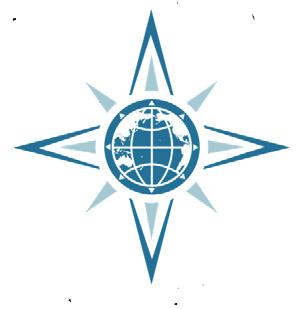

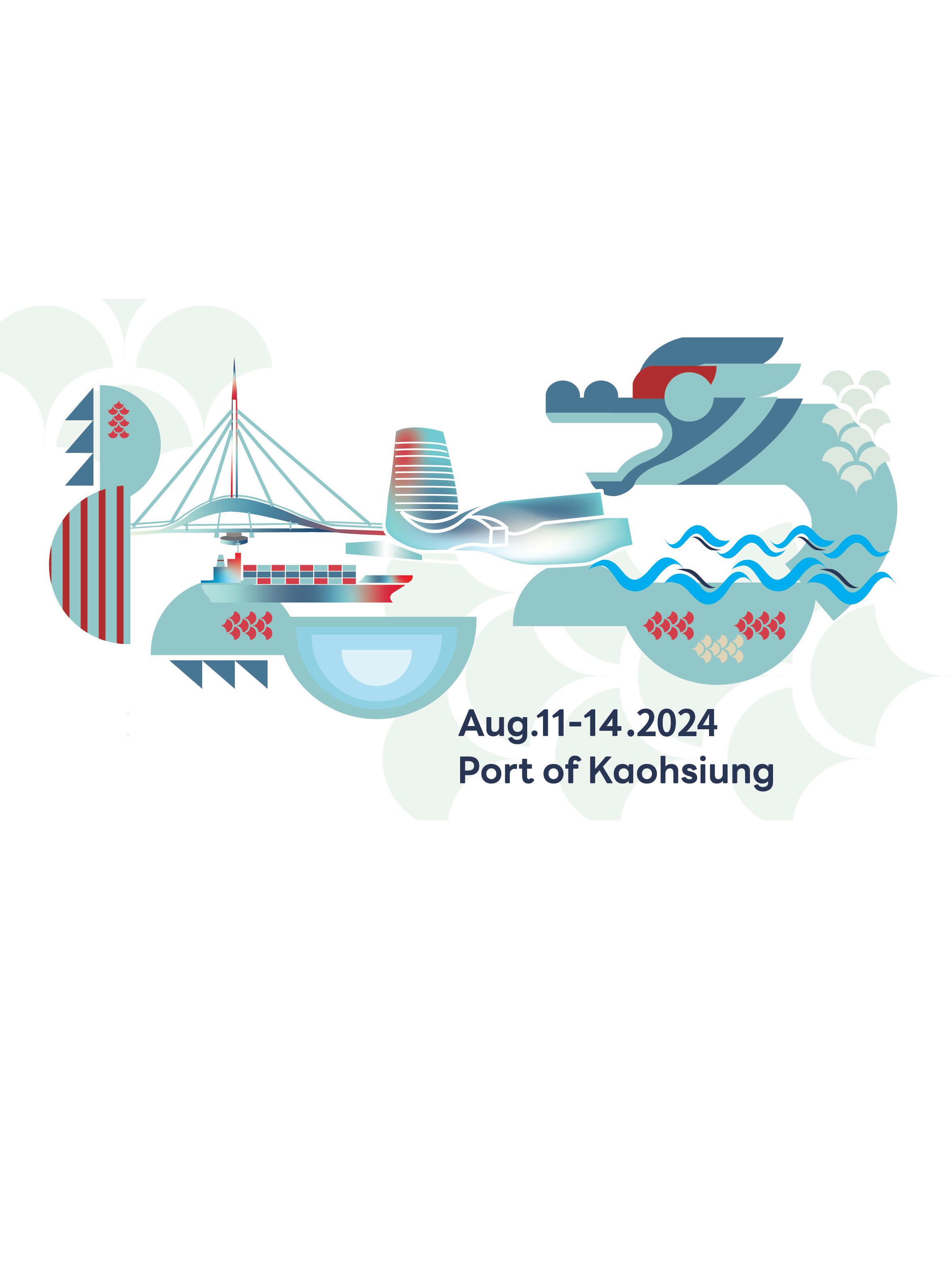
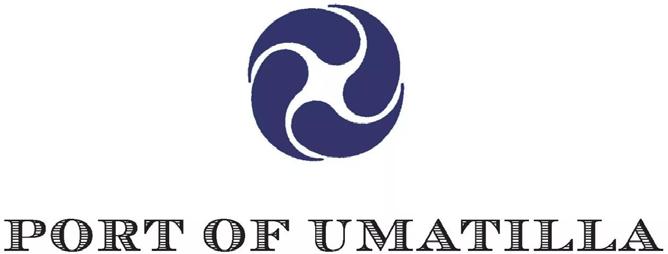

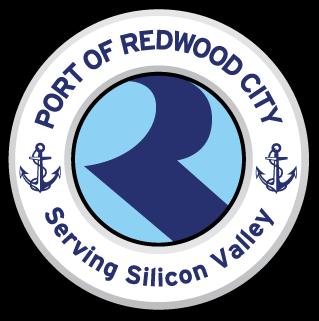







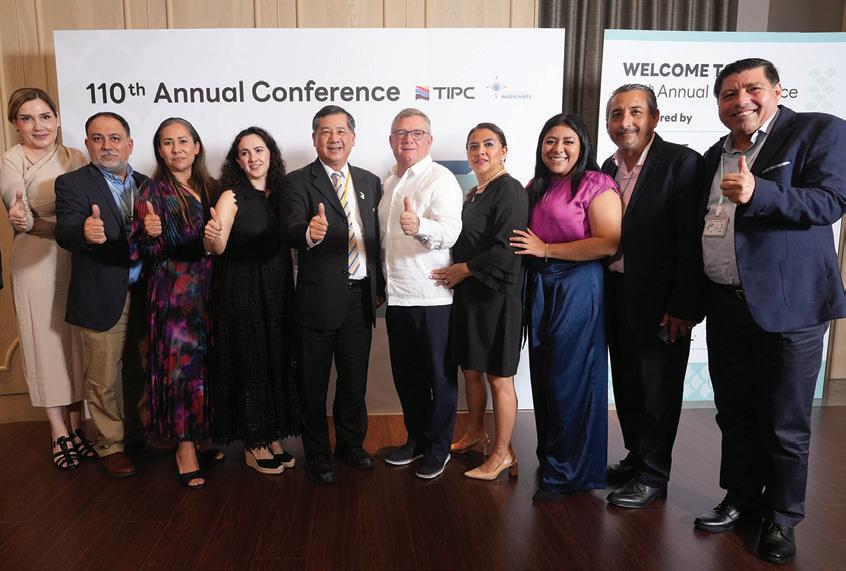

Ian Marr, President & CEO Port of Nanaimo, BC Canada
Ian Marr, President, Port of Nanaimo, BC Canada
Conchita Taitano, First Vice President, Port Authority of Guam, Guam USA
Stephen Ribuffo, Second Vice President, Port of Alaska, AK
Jerry Nathan, Third Vice President, Republic of the Marshalls Islands Port Authority, RMI
Shao-Liang Chen, Past President, Taiwan International Ports Corporation
Shu-Hui Cheng, Taiwan International Ports Corporation, Ltd., Taiwan
Zoran Knezevic, Port Alberni Port Authority, BC Canada
Sara Young / Kevin Ware, Port of Skagit, WA USA
Kirk DeJesus, Port of Stockton, CA USA
Sharon Weissman, Port of Long Beach, CA USA
Falenaoti Loi-On Fruean, American Samoa Department of Port Administration
Manuel Fernando Gutiérrez Gallardo, General Coordination of Ports and Merchant Marine
AT-LARGE REPRESENTATIVE
Kim B. Puzey, Port of Umatilla, OR USA
Leo Tudela, Commonwealth Ports Authority, Commonwealth of Northern Mariana Islands USA
Jane McIvor (jane@pacificports.org)
Philippe Critot (philippe@pacificports.org)
The APP has been committed to building partnerships, facilitating dialogue, and encouraging best practices for port governance and management throughout the Pacific since it was established in 1913 as the Pacific Coast Association of Port Authorities.
Throughout our 100+-year history, our objectives have remained consistent. With a focus on collaboration, the APP strives to encourage and facilitate best practices and professional development through conferences, workshops annd strong communications.

October/November 2024
Volume 5/Issue 3
Publisher
Association of Pacific Ports
Executive Director & Editor Jane McIvor
Contributors
Kate Chandler Indra Granados
Manuel Gutiérrez Elizabeth W. Hull
Anya Kwan Lisa Lefeber
Jane McIvor Carla Neal
Advertising Phone: 323-578-2452
Philippe Critot (philippe@pacificports.org)
Editorial & Association business Phone: 604-893-8800
Jane McIvor (jane@pacificports.org)
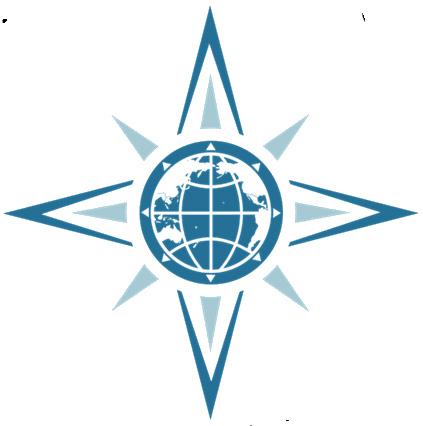
Contents copyrighted 2024 Association of Pacific Ports
300 - 1275 West 6th Avenue, Vancouver, British Columbia Canada V6H 1A6 Phone: 604-893-8800 / E-mail: jane@pacificports.org
The opinions expressed by contributing writers are not necessarily those of the Publisher. No part of this magazine may be reproduced in any form without written permission of the publisher.
EDITOR’S NOTE: Due to the international nature of our membership, spelling within each article remains consistent to the country of origin.

024 has been a great year for the Association of Pacific Ports! We saw a record number of new members, an amazing Annual Conference, not to mention a highly successful Winter Conference. We have concrete proof that membership within the APP does indeed create meaningful relationships and opportunities as well as valuable information for professional development.
The APP’s Winter Conference in Hawaii in January, 2024, marked the first time conference attendees who are part of the International Association of Maritime and Port Executive (IAMPE) were able to apply for Continuing Education credits. This is a testament to the relevance of APP conferences and the strong agenda where attendees are learning pertinent information.
The APP’s 110 th Annual Conference was one of our most memorable conferences to date — and that’s really saying something following the success of the Annual Conference hosted by the Port of Long Beach! We extend a heartfelt thanks to the Taiwan International Ports Corporation and TIPC
Chairman Dr. Hsien-Ye Lee for their incredible hospitality, organizational skills and attention to every detail.
One session that was of particular significance for the APP was the Sister Port Agreement signings between the Port of Kaohsiung and the Port of Long Beach, and the Port of Kaohsiung and the Republic of Marshall Islands Ports Authority. For the Association to provide a venue for these ceremonies
and celebrate the relationships that were developed through the APP confirms that we are fulfilling our mandate. It’s a strong argument for members to participate in our conferences.
Perhaps the most significant milestone for the APP was the remarkable growth in Port Memberships we have just experienced. It is a great pleasure to welcome the Port of Everett, Washington, plus 11 ports and the General Coordination of Ports and Merchant Marine from Mexico as our newest Port Members. The opportunity to work with these new members should excite all of our existing members, both Associates and Ports.
Can’t wait to see what 2025 brings!
— Jane McIvor

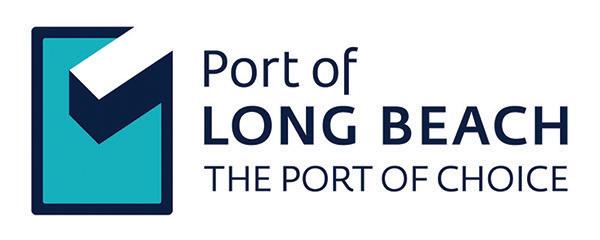




The Port of San Diego has been honored with two awards for the Portside Community Academy from the San Diego Press Club and the Public Relations Society of America, reflecting excellence in community education. The Portside Community Academy is an educational program aimed at building deeper connections with portside communities where the public is given a unique opportunity to explore innovations in the maritime industry that are helping improve human health and quality of life on and around San Diego Bay. Representatives from the Port accepted the awards at ceremonies on Saturday, October 19, and Tuesday, October 22. “We are honored that the Portside Community Academy has been recognized with these awards from the Public Relations Society of America (PRSA), San Diego/Imperial Counties Chapter and the San Diego Press Club,” said Chairman Frank Urtasun, Port of San Diego Board of Port Commissioners. “This achievement reflects the dedication of our entire team — from Port staff and subject matter experts to our community partners and Port businesses. I am especially proud of our graduates and current students for embracing this learning opportunity and engaging with our efforts to reduce emissions and electrify port operations. I encourage members of the public to sign up on the interest list for the Portside Community Academy to experience firsthand the transformative work happening at the Port.” The Port, along with its consultant PRM Consulting, Inc., was awarded the following:
• Public Relations Society of America, San Diego/ Imperial Counties Chapter Edward L. Bernays Mark of Merit Silver Bernays Award (Community Relations: Government Category).
• San Diego Press Club 51st Annual Excellence in Journalism Awards - Second Place Award (PR, PIO and Trade Publications Category: Special Interest Publications) for brochures produced for the Portside Community Academy.
Following its launch in 2023, the Academy has graduated 55 participants from its structured educational program, and is currently hosting two fall cohorts, including the first Spanish-language cohort. Designed for adult community members, this five-session program was developed by subject-matter experts within the Port. The curriculum explores the Port’s clean air and electrification projects, focusing on impacts to human health, quality of life, and technological advancements in the maritime industry. It includes a bus tour of the Port’s marine terminals and a narrated boat tour of San Diego Bay as well.
“This achievement reflects the dedication of our entire team — from Port staff and subject matter experts to our community partners and Port businesses...”
This educational program is designed with topics of special interest to residents of portside communities, which encompass parts of Barrio Logan, Logan Heights, Sherman Heights and National City, along with communities in Chula Vista, Coronado, Imperial Beach, and San Diego. The Portside Community Academy is a pioneering cross-departmental effort, representing the Port’s dedication to becoming a “Port of Firsts.” It aligns with the Maritime Clean Air Strategy (MCAS) and efforts to be an early adopter of zero-emissions technologies for ships, cranes, tugboats, and trucks, while also addressing the specific needs and concerns of environmental justice communities, including community education. Participants receive a certificate of completion and the opportunity to be recognized at a Board of Port Commissioners meeting. For more information and to sign up on the interest list for the Portside Community Academy, please visit portofsandiego.org/academy.
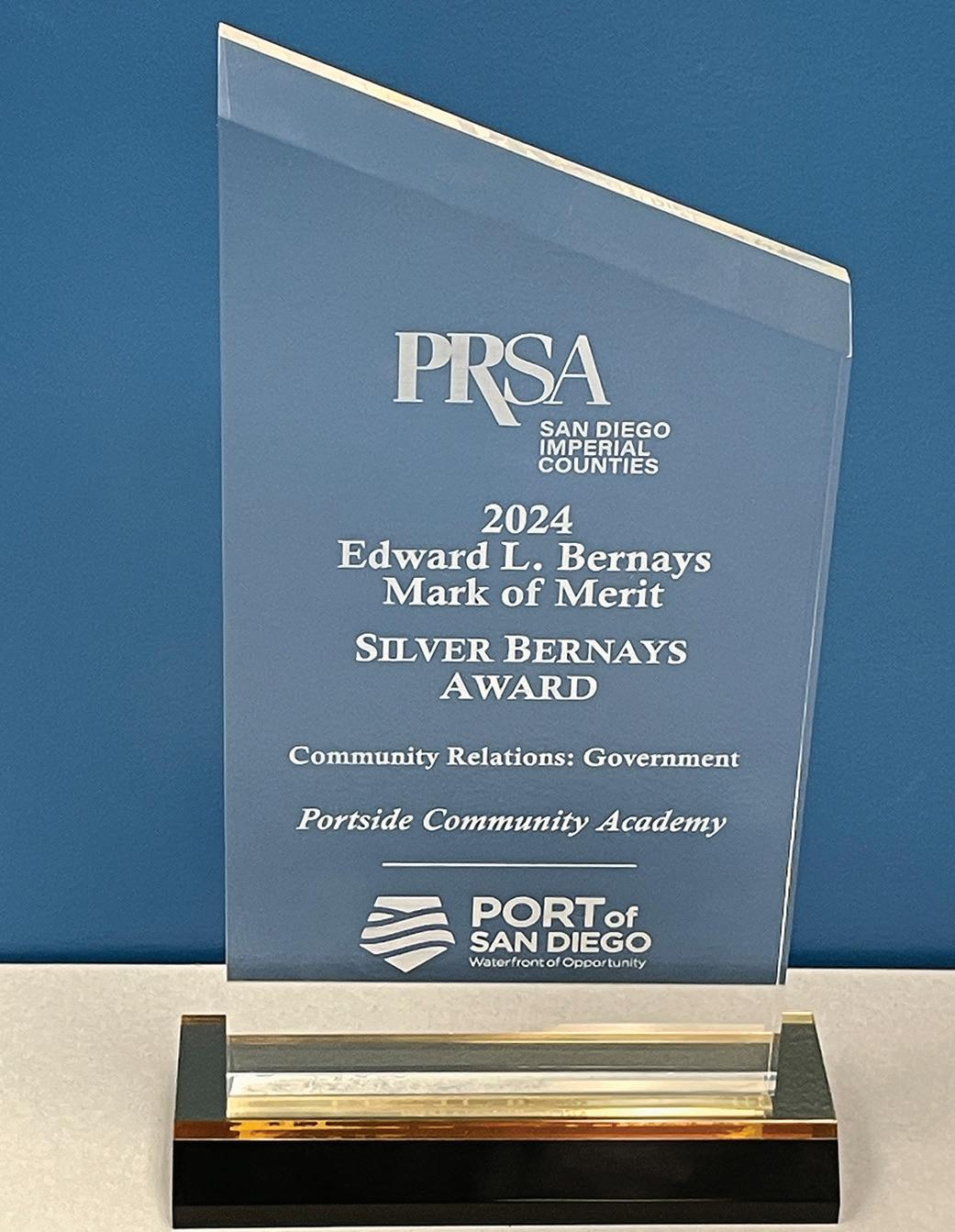
Matson has announced the start of construction on the first of three new “Aloha Class” containerships designed for its Hawaii and China-Long Beach Express (CLX) services. After a small ceremony at Philly Shipyard in Pennsylvania, the cutting of steel plates began, initiating the work to build the ships for delivery to Matson in 2026 and 2027.
The three new Jones Act -compliant vessels, representing an investment of approximately $1 billion, will be built to match the size and speed of Matson’s two existing Aloha Class ships, Daniel K. Inouye, and Kamina Hila, which were also built by Philly Shipyard and entered service in 2018 and 2019, respectively, as the largest containerships ever constructed in the U.S.
Like their sisterships, the new vessels will be equipped with dual fuel engines designed to operate on either conventional marine fuels or liquefied natural gas (LNG), as well as other “green ship technology” features, such as a fuelefficient hull design, environmentally safe double hull fuel tanks, and freshwater ballast systems. While the earlier ships required some modification to operate with LNG, the new ships will be delivered LNG-ready.
The first vessel is expected to be delivered in the fourth quarter of 2026 with subsequent deliveries in 2027.

replace three vessels currently deployed in Matson’s Hawaii and CLX services.
Matson plans to name the three new containerships Makua, Malama, and Makena. Matson’s original ships named Makua, Malama, and Makena were all freighters commissioned by the United States Shipping Board (USSB), an emergency agency established by the 1916 Shipping Act to increase the number of U.S. ships supporting
the war effort during World War I. They were purchased by Matson in the 1920s and remained active in the Matson fleet for the next two decades.
• Makua (“mah-KOO-ah”) is a Hawaiian word for parent, elder, ancestor, or family.
• Malama (“MAH-lah-mah”) is a Hawaiian word meaning to care for or protect.
• Makena (“Mah-KEN-ah”) is a Hawaiian word for abundance.

Matson has set corporate goals to achieve a 40 percent reduction in Scope 1 greenhouse gas (GHG) fleet emissions by 2030 and net-zero Scope 1 GHG emissions by 2050.
With a carrying capacity of 3,600 TEU, the 854-foot Aloha Class vessels are designed to operate at speeds in excess of 23 knots in support of Matson’s service hallmark — fast and reliable delivery of goods.
The three new Aloha Class ships will
The Jose D. Leon Guerrero Commercial Port of Guam is proud to celebrate its 49th anniversary in October, marking nearly five decades of essential service to the people of Guam, the region, and the United States.
This year’s Port Week was held from October 21-25, with the theme “Port Strong: Nearly Half a Century of Grit, Resilience, and Service Fueling Local and Regional Economies, Partnerships, and National Security.”
Throughout the week, the Port hosted various activities to honor the achievements of its dedicated workforce,
Ireflect on its legacy, and recognize its crucial role in driving economic growth, supporting partnerships, and ensuring national security. The Port Week Opening Ceremony took place on October 21, 2024, featuring a flagraising ceremony, Parade of Trucks, and remarks from dignitaries, including Governor Lou Leon Guerrero and Lt. Governor Josh Tenorio. The entire opening ceremony can be viewed on the Port’s Facebook page.
General Manager Rory J. Respicio acknowledged the significance of this milestone, stating: “For nearly half a century, the Port has been the lifeline
t is with deep regret that the Port of Skagit announces the sudden passing of longtime Port Commissioner Steve Omdal on Saturday, September 28, 2024. Omdal was first elected as a Port of Skagit Commissioner representing District 2 in 2012. His motivation for seeking the Commissioner position was to bring new ideas and a “for profit” business background to enhance the ability of the Port to improve economic development opportunities for all Skagit County residents.

Omdal’s business background was in sales and management with pharmaceutical companies Wyeth-Ayerst and BASF, and later on with FedEx Services. His sales career began in the mid-1970’s with Western Farmers Association, a nod to his roots growing up on a dairy and crop farm in nearby Bow, Washington. His experience on the farm helped Omdal embrace and understand the importance of value-added agriculture in our community today, and the required infrastructure for production, manufacturing, and marketing for the industry. As a lifelong Skagitonian, his passion for agriculture, the preservation of farmland, and creating opportunities for Skagit growers and producers was widely known.
His focus as Port Commissioner was on jobs creation, particularly in the manufacturing sector, as well as growth in the value-added agriculture sector. His collaborative style included a desire to learn and a willingness to brainstorm, “think outside the box,” and not be afraid of new ideas or opportunities that may arise in a constantly changing environment. During his time on the Commission, Omdal was involved with several significant projects and initiatives that advanced the Port’s mission, including the acquisition of the former Northern State Hospital property from the State of Washington, the purchase of 123 acres for Watershed Business Park for expansion of the value-added agriculture sector, and the completion of fiber optic network infrastructure that brought broadband access to eastern Skagit County.
In addition to his career and Port work, Omdal was dedicated to his community and actively involved in several groups and initiatives. He served on Skagit County’s Agricultural Advisory Board, the Executive Committee of Washington Public Ports Association, Skagit Council of Governments, the Genuine Skagit Valley Advisory Committee, and Home Trust of Skagit.
of Guam and the region, connecting us to the world. Our employees, known as Port Strong, have been the driving force behind every success, showing unmatched resilience in the face of challenges. Whether it’s ensuring the smooth flow of goods during a global pandemic or bouncing back after a devastating typhoon, they are the backbone of the Port. As we celebrate this anniversary, we honor the grit, dedication, and service of our workforce and look forward to building an even brighter future.”
“We have accomplished so much this past year toward improving and securing our facilities to better serve our community all the while remaining fiscally prudent and achieving clean audits and receiving positive credit ratings from Moody’s Investors Service and S&P Global Ratings,” said Respicio. “The heart of the Port lies in its people—our Port Strong employees, past and present, whose dedication and tireless work have been the backbone of our success. Through every challenge, every storm, and every crisis, they have shown resilience that is second to none.”
As the Port Authority of Guam approaches its 50th anniversary in 2025, it remains committed to its mission of fueling local and regional economies and supporting national security and will celebrate the enduring legacy of the Port and its vital role in shaping a sustainable and prosperous future for Guam and the region.
“As we look toward the future, we will continue to build on our successes by modernizing our infrastructure, enhancing our services, and securing critical partnerships. The Port will remain the cornerstone of Guam’s economy and a key player in the broader Indo-Pacific region,” General Manager Respicio said.
The Association of Pacific Ports (APP) is pleased to welcome Ian Marr as our newly elected President. Representing the Port of Nanaimo (NPA), Mr. Marr assumes the role following the tenure of Shao-Liang Chen, President of the Taiwan International Ports Corporation (TIPC), host of the recent APP 110th Annual Conference. “It is an honor to lead the APP in the coming year,” said Mr. Marr, adding that he was excited about welcoming Association members to Nanaimo, British Columbia, for the APP’s 111th Annual Conference in August 2025.
While named as the President and CEO of NPA in 2019, Mr. Marr has been with the Port Authority since 1987, starting in the property leasing department and working his way through the organization to become Senior Vice President of Finance & Administration before assuming the leadership role. Originally from Scotland, Mr. Marr is a Certified General Accountant and Chartered Professional Accountant.
Under Marr’s leadership, the Port of Nanaimo has undertaken initiatives such as the diversification of cargo at Duke Point and the addition of the Vehicle Processing Centre –resulting in overall growth for the Port and the surrounding community. Today, the Port of Nanaimo provides a key link between Vancouver Island and more than 24 ports in over 13 countries, including the U.S., China, Taiwan, and Japan. The Port is also designated as a Foreign Trade Zone Point, a strategic location for international trade that is supported by a single point of access to information on relevant government policies and programs.
This is Mr. Marr’s second stint as President of the Association of Pacific Ports. First elected in 2019, Marr

successfully led the APP through both a staff transition and the COVID pandemic. “The years during COVID were challenging for the Association given that our main activities include two conferences per year. However, adjusting to the realities of COVID provided opportunities to develop new initiatives, including Pacific Ports Magazine, that have resulted in an even stronger and more resilient Association.”

During this year’s Annual General Meeting in Kaohsiung, Taiwan, APP members voted not only on the following 2024/25 Executive Committee slate which included Mr. Marr’s position as President, but also to create a new regional representative position to recognize the inclusion of Mexican ports.
The full roster of APP’s Executive Committee can be found on Page 6 of this issue of Pacific Ports Magazine.

• Dock Space
Container Dock: 1,112ftx55ft, D35ft Main Dock: 400ftx55ft, D35ft
• Inter-Island Dock: 90ftx40ft, D25ft Fuel Dock: 406ftx45ft, D40ft
• Service Wharf: 300ftx75ft, D25ft
• 4.5 acre Container Yard
• 40,000sqft Warehouse AIRPORT OPERATIONS
Pago Pago International Airport (PPG) – Tutuila Island
700-acre public airport
• 6 miles SW of Pago Pago, AS Ofu Airport (Z08) – Manua Islands
• 18-acre public airport
• 1 mile SE of Ofu Village, AS Fitiuta Airport (FAQ) –Manua Islands
• 34-acre public airport
.1 mile SE of Fitiuta Village, AS



Located in South Pacific Ocean, in the heart of Polynesia, Pago Pago Harbor is one of the world’s largest natural harbors, and it is also considered one of the best and deepest deepwater harbors in the South Pacific Ocean or in Oceania as a whole.Pago Pago International Airport is capable of accommodating any size of commercial aircraft. When combined, our seaports and airports make the movement of cargo and people to and from American Samoa easy because of its strategic midpoint for several shipping and air routes between the U.S. West Coast, Honolulu Hawaii, Australia, New Zealand and other pacific nations.






Speaking at the recent APP 110th Annual Conference in Taiwan, Captain Manuel Fernando Gutiérrez Gallardo, General Coordinator of Ports & Merchant Marine, highlighted the importance of Mexico’s ports and their contribution not only to the country but to the world. “Mexico is a commercial node with openness to the world market,” he said. “The Government of Mexico has enhanced our geographical position and has taken us to the point of being
one of the countries with the most trade agreements on the entire planet.”
Indeed, in a global context, the importance of Mexico’s ports cannot be understated. More than 20 percent of exports and close to 40 percent of
imports in Mexico are carried through their ports, reaching more than 316 ports in 63 countries on five continents. So how has Mexico achieved these impressive numbers and what does the future hold?
THE PACIFIC PORTS OF MEXICO


Background — Mexico’s ports
Mexico’s 103 ports and 15 enabled terminals are governed under the Ports Law of Mexico, legislation that regulates their operation, development and safety. Falling within the Secretariat of the Navy (SEMAR), the General Coordination of Ports and Merchant Marine (CGPMM) promotes the competitiveness of ports, terminals, marinas and port facilities. Within the CGPMM lies the General Directorate of Ports and the National Port System Administrations (ASIPONAS), of which there are eleven on the Pacific Coast – Ensenada, Guaymas, Topolobampo, Cabo San Lucas, Mazatlán, Puerto Vallarta, Manzanillo, Lázaro Cárdenas, Acapulco, Salina Cruz, and Puerto Chiapas. Background on these ports can be found in the pages to follow. Approximately 80 percent of total cargo moved is done so through the National Port System Administrations. They host more than 1,000 companies and are responsible for over 200,000 jobs. For the first four months of 2024, Pacific Coast ports moved a record 2.15 million TEUs — a 19 percent yearover-year increase. Mexico’s two largest Pacific Coast ports — Manzanillo and Lázaro Cardenas — recorded a 14.5 percent year-over-year increase (to 1.27 million TEUs) and a 35 percent yearover-year increase (to 711,148 TEUs), respectively.
Prior to his appointment as General Coordinator in May 2024, Captain Gutiérrez had been the General Director of ASIPONA Ensenada since 2020. His career spans 36 years in the maritime industry, starting with professional studies at the Merchant Nautical School of Veracruz, a Master’s Degree in Shipping and Port Business Administration and a Doctor Honoris

Representing Mexico’s ports at the recent APP 110th Annual Conference in Taiwan (left to right): Guillermo Von Borstel Osuna, Commercial Manager, Guaymas Port Administration; Amador Arteaga Sahagun, Commercial Manager, Ensenada Port Administration; Joel Sandoval Gómez, Director General, Ensenada Port Administration; Manuel Gutiérrez Gallardo, General Coordinator, General Coordination of Ports and Merchant Marine; Julieta Juarez Ochoa, Commercial Manager, Manzanillo Port Administration; Anna Chavez Aleman, Administration and Finance Manager, Lázaro Cárdenas Port Administration; Indra Granados Hidalgo, Executive Director, Port and Maritime Priority Projects; Maria Calleja Ramirez, Commercial Manager, Topolobampo Port Authority.
Recognizing the transformation of global trade, Captain Gutiérrez noted that Mexico’s ports were focused on diversification of routes and commercial partners...
Causa from the Mexican Institute of Leaders of Excellence. His at-sea experience saw him working his way up from a trainee officer and through the ranks to Captain on board merchant ships of various types.
Within Mexico’s public administration he held the positions of Port Facility Protection Officer in the then Integral Port Administration of Veracruz; Chief of Navigation and Regional Port Captain in the Port of Chiapas; Director of Maritime and Port Protection in the General Directorate of Merchant Marine; Superintendent of Regulations and Lead Coordinator of Towing and Offshore Projects at
PEMEX Logística. In the private sector, he worked as a maritime inspector as well as with Transportación Marítima Mexicana (TMM) as Director of Ports, Terminals and Agencies.
He has received several commendations for perseverance as a Mexican Merchant Marine, as well as a merit award for his exceptional work coordinating efforts to control the fire aboard the Pemex Logistics Oil Tanker “Burgos”.
Recognizing the transformation of global trade, Captain Gutiérrez emphasized that Mexican ports are

prioritizing the diversification of routes and commercial partners, which requires staying at the forefront of logistics innovation. “We are achieving this through technological, regulatory, infrastructure, safety, and environmental protection improvements, while also focusing on strengthening nautical education and the training of young human capital that drives the entire sector,” he stated to attendees at the APP Conference.
Currently, projects are being developed in various areas of Mexico that are designed to trigger connectivity and natural use of the regions, opening an important window for the development of trade routes. In this context, Captain Gutiérrez highlighted the Interoceanic Corridor of the Isthmus of Tehuantepec, which includes a railway and road network of approximately 300 km to link the ports of Salina Cruz and Puerto Chiapas, in

the Pacific, and Coatzacoalcos and Dos Bocas, in the Gulf of Mexico, with the firm objective of developing the south-southeast of Mexico.
“In Mexico, we recognize that our geostrategic position and infrastructure investments are key factors to establishing a regional, national and international logistics node, and creates an efficient and competitive alternative for the integration of maritime roads on both coasts,” he said.
Considering the critical role that ports play in keeping supply chains running, Captain Gutiérrez first outlined efforts to move towards the digitalization of administrative processes and the challenge to develop a strategic vision that considers aspects of cybersecurity, process optimization, the reduction in operation times, and greater efficiency in the transfer of information.
Under these premises, Mexico has developed the Safe Smart Port (PIS) platform for the approval of procedures that reduce time and costs, incorporating all the actors in the logistics chain into a single platform for exchanging information and managing the various procedures and processes within the port areas.

In environmental matters, the CGPMM and its ports are firmly committed to minimizing the negative impacts of maritime transport and the port industry. “We are strong advocates of cooperation to meet the goals of the Paris Agreement, the United Nations 2030 Agenda for Sustainable Development, the High-Level Panel for a Sustainable Ocean Economy, and the decarbonization targets set by the International Maritime Organization,” said Captain Gutiérrez.
As noted earlier, Captain Gutiérrez also places significant emphasis on enhancing the education and training of merchant mariners in Mexico. The Maritime and Port University of Mexico operates three Merchant Nautical Schools and a Nautical Education Center. This education system provides advanced training for young Deck and Engineer Officers, while also offering courses to update the skills of officers, junior personnel, fishermen, and tourism service providers.
“New generations are our greatest commitment, and for this reason, our priority objective is the acquisition of a training ship to comply with the provisions of the International Convention on Standards of Training, Certification, and Watchkeeping for Seafarers (STCW), which mandates 12 months of onboard training for our cadets. This will allow us to reduce the qualification period from six to four years,” he said.
Captain Gutiérrez concluded his presentation by summarizing the goals of the CGPMM: “Mexico is advancing in the development and modernization of maritime-port activity through new investments and competitive, efficient port services aimed at fostering strong economic and commercial growth”. Consider Mexico an ally in the Pacific and a partner to collaborate with in

Reinforcing Captain Guitiérrez’s emphasis on training, the Pemex Maya tug was honored with the 2024 International Maritime Organization (IMO) Award for Exceptional Bravery at Sea. The crew was recognized for their remarkable courage, seamanship, and determination during the rescue of six castaways amid the treacherous conditions of Hurricane Otis.
advancing our region, as we undoubtedly share the same objectives.
With a new administration Mexico is driving the promotion of water transportation of cargo and passengers through domestic and short-sea shipping. Integrated with the country’s land and air transport networks, these maritime routes form a vital component of an efficient national transportation system, enhancing connectivity and supporting Mexico’s economic growth and well-being
Taking office on October 1st, Mexico’s new government administration has established a comprehensive port vision focused on strengthening port infrastructure and competitiveness. Under the leadership of Admiral Raymundo Pedro Morales Ángeles, Secretary of the Navy, significant emphasis will be placed by the Navy and the General Coordination of Ports and Merchant Marine on maritimeport matters, promoting port modernization and operational efficiency. Additionally, the development of domestic and Short Sea Shipping (SSS)
has been prioritized to fully leverage the country’s extensive coastlines and enhance regional connectivity. This approach seeks not only to optimize maritime trade capacity and logistical integration but also to promote security, sustainability, and diversification of trade routes, aligning port and maritime policy with both national and international development goals. PP

To learn more about Mexico’s General Coordination of Ports and Merchant Marine, visit https://www.gob.mx/ puertosymarinamercante
Port of Ensenada plays a crucial role in facilitating foreign trade activities between Northwestern Mexico and the Southern United States, contributing significantly to the economic growth of Baja California. In recent years, the port has experienced substantial expansion, with the development of new infrastructure, specialized cargo handling areas, and a push towards offering value-added services, which have strengthened its reputation as a robust and dependable port.
Thanks to its strategic and competitive location, a growing number of companies are leveraging the port for their international trade operations. Ensenada provides a wide range of services, including general cargo handling, cruise operations, yacht moorings, shipyards, fishing, and logistics, all of which help reduce costs for users through the integrated Ensenada - El Sauzal - Costa Azul Port System. This comprehensive service offering further positions the port as a key hub within
the region’s maritime and logistics network.
Guided by its Port Development Master Program — updated every five years and currently running under the 2023-2028 version — ASIPONA Ensenada’s primary objective is to drive regional economic growth through trade and maritime transportation. The port aims to achieve this by ensuring efficient, safe administration and operations, building advanced infrastructure, and offering world-class services, all while contributing to social development.
For land-based cargo transport originating from or destined for the port, the most important routes are the Tijuana–Ensenada highway and the Tijuana–Ensenada and Tecate–Ensenada federal highways. The Tijuana–Ensenada highway is a high-specification road (4 lanes) that handles the largest share of cargo flows. These three routes serve as critical connections, linking the port with the main road network of the United States.
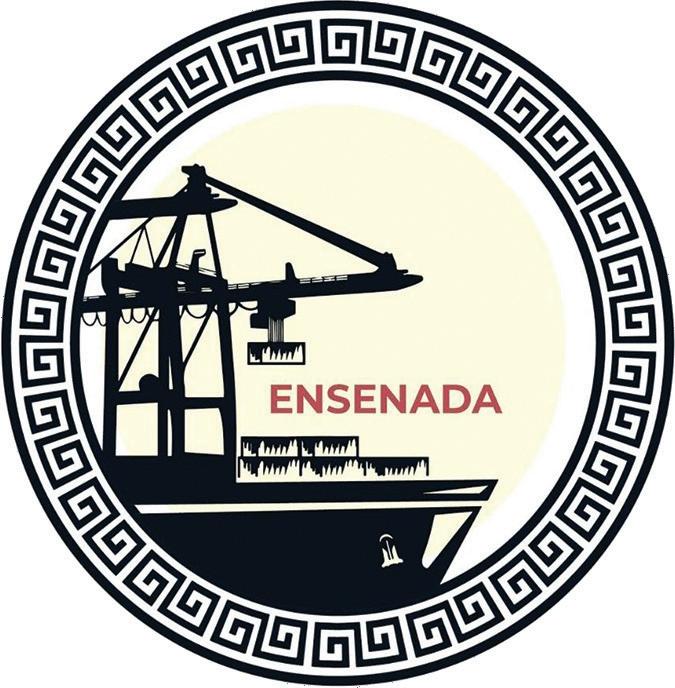
ASIPONA Ensenada’s facilities and terminals include those for handling containerized and general cargo, bulk minerals, agricultural products, liquefied natural gas, commercial fishing, the naval industry, cruise ships, nautical tourism, and shipyards.
To ensure safe navigation, cargo security, and terminal operations, all three ports are equipped with breakwaters and adhere to international standards for systematic marking of channels and

docks. Port of Ensenada boasts a draft of 14.5 meters and an access channel of 2,000 meters; El Sauzal has a draft of six meters, and Costa Azul has a draft of 20 meters. Ensenada holds the distinction of having the deepest draft on the Baja California peninsula.
Shipyards — Ensenada features four diverse shipyards, drydock facilities, and services for ship repair and vessel conversion. The shipyards can accommodate a wide variety of vessels, including commercial and passenger ships, fishing vessels, cargo ships, tugs, barges, tankers, and pleasure craft ranging from 26 to 600 feet.
Cargo and container terminals
— The port has multiple terminals, including general cargo and specialized container terminals. These terminals handle a broad range of goods, from electronics to agricultural products. The port is well-connected by road and rail, and it features two bonded warehouses covering 22 hectares for foreign trade storage. Additionally, there are designated areas for domestic shipping services and specialized terminals for bulk cargo handling.

To learn more, visit puertoensenada.com.mx
Bulk terminals: — Ensenada’s bulk terminals feature specialized loading and unloading facilities, including conveyor systems and storage silos, supporting both import and export commodities for the agricultural and mining sectors. Cruise industry — Port of Ensenada is a significant player in the cruise industry, accommodating vessels with up to 3,200 passengers. It ranks third nationally and is the leading cruise port on the Mexican Pacific, with two docking positions.
Projects and achievements — Several ongoing projects aim to enhance Ensenada’s infrastructure and capabilities. These include improvements to cruise terminal facilities to accommodate larger ships, increasing cargo operation efficiencies, upgrading security measures, developing waterfront areas for tourism, and focusing on environmental sustainability through waste management improvements and investments in clean energy sources.

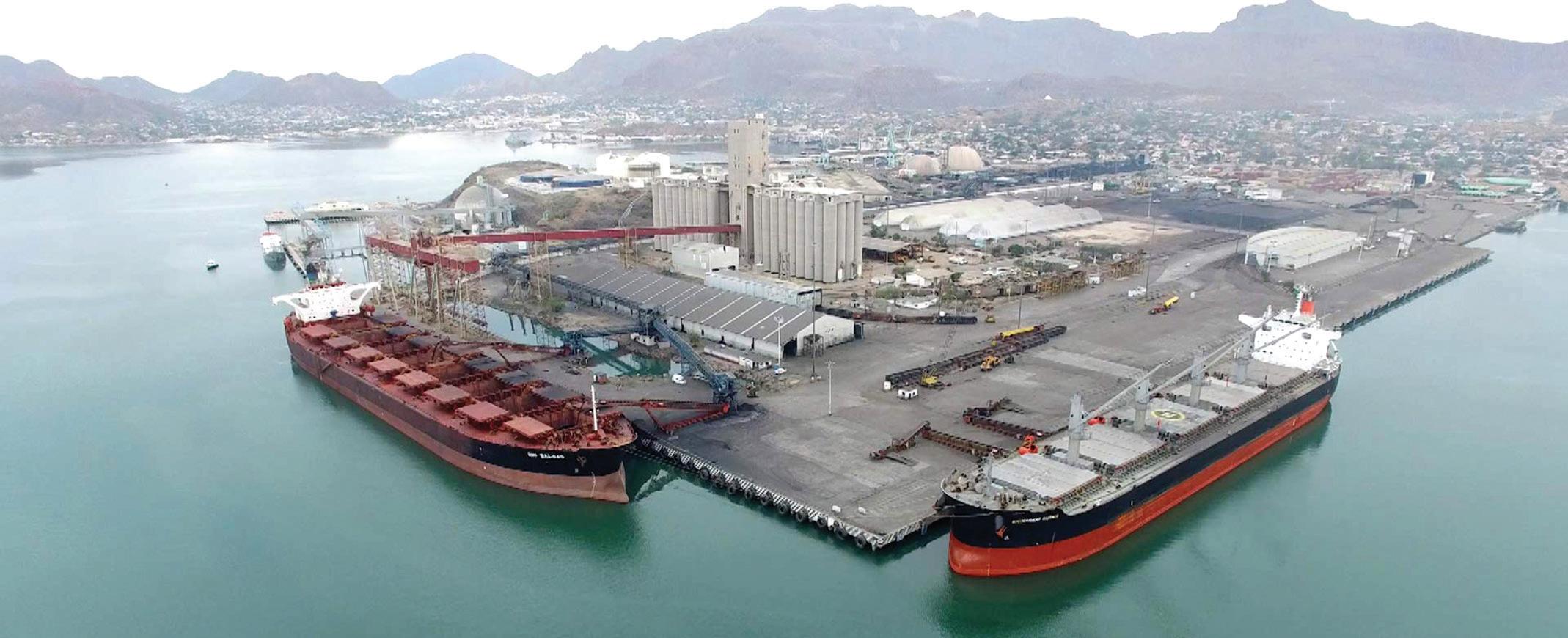



Port of Guaymas is the largest commercial port in Northwestern Mexico, with a strong focus on bulk mineral handling. It offers excellent connectivity through the Guaymas–Arizona and Guaymas–Mexicali trade corridors, and is just 1.8 kilometers from Federal Highway 15, serving as a key link in the Canamex corridor, only 400 kilometers from the U.S. border at Nogales. This strategic location and infrastructure make Guaymas a key logistics hub for cross-border trade and regional commerce.
Its natural geography, protected by Isla de Pájaros and Punta Baja, provides inherent navigational safety, eliminating the need for breakwaters or other protective infrastructure.
Spanning 67 hectares, the port boasts six berthing positions on two sides — 360 meters on the south side and 900 meters on the east side — with 53 ft of depth, complemented by a variety of storage areas.
The Guaymas-Arizona Logistics Corridor begins at the port and offers seamless, multimodal transport with minimal natural barriers. This makes it an ideal option for transcontinental trade, particularly between Pacific coastal nations and markets in northern Mexico and the southern U.S. This corridor is serviced by major rail networks, including Ferromex, Union Pacific (UP), Pacer Stacktrain, Burlington Northern Santa Fe (BNSF), and CSX, offering double-stowage capacity for efficient cargo movement.
Known for its high productivity in handling bulk products, Port of Guaymas offers specialized terminals for minerals, grains, cement, and fertilizers. Some key terminals include:

• Cortez Transfert, S. de R.L. de C.V.:
• Liquid fertilizer handling and storage with an annual capacity of 500,000 tons.
• Granular fertilizer handling and storage with a capacity of 1 million tons annually.
• Mineral bulk storage with a capacity of 500,000 tons per year.
• ArcelorMittal Mexico S.A. de C.V.: Handles iron ore and its derivatives, with an annual capacity of 2 million tons.
• Multigua S.A. de C.V.: Specializes in grain imports and exports, featuring 72 silos with a capacity of 68,000 tons and an automated loading/unloading system. Annual capacity reaches 4 million tons.
• ASIPONA Guaymas: Copper concentrate storage facilities with 6,000 square meters of land, an annual capacity of 500,000 tons, and a 150-meter-long warehouse capable of storing 40,000 tons.
• Mexicana de Cobre, S.A. de C.V.: Handles storage and
shipment of copper concentrates and derivatives such as blister, anodes, cathodes, molybdenum, and sulfuric acid. It operates over 45,000 square meters of land and five 100,000-ton storage tanks.
• CEMEX México, S.A. de C.V.: Specializes in cement handling with a pneumatic loading system, hopper unloading, and a 30,000-ton capacity storage dome.
• Servicios Marítimos PACNAV S.A. DE C.V.: Operates a 10,000-square-meter warehouse for cement, with underground piping to Pier 2 for efficient ship loading.
ASIPONA Guaymas also features a vibrant cruise terminal, accommodating vessels up to 300 meters in length. It offers comprehensive services for passengers, including a restaurant area and 16 commercial shops, enhancing the visitor experience.

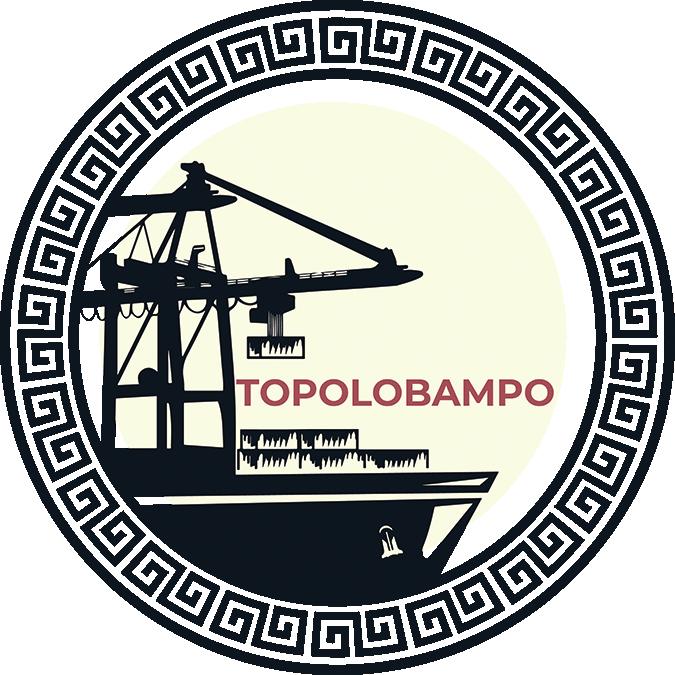


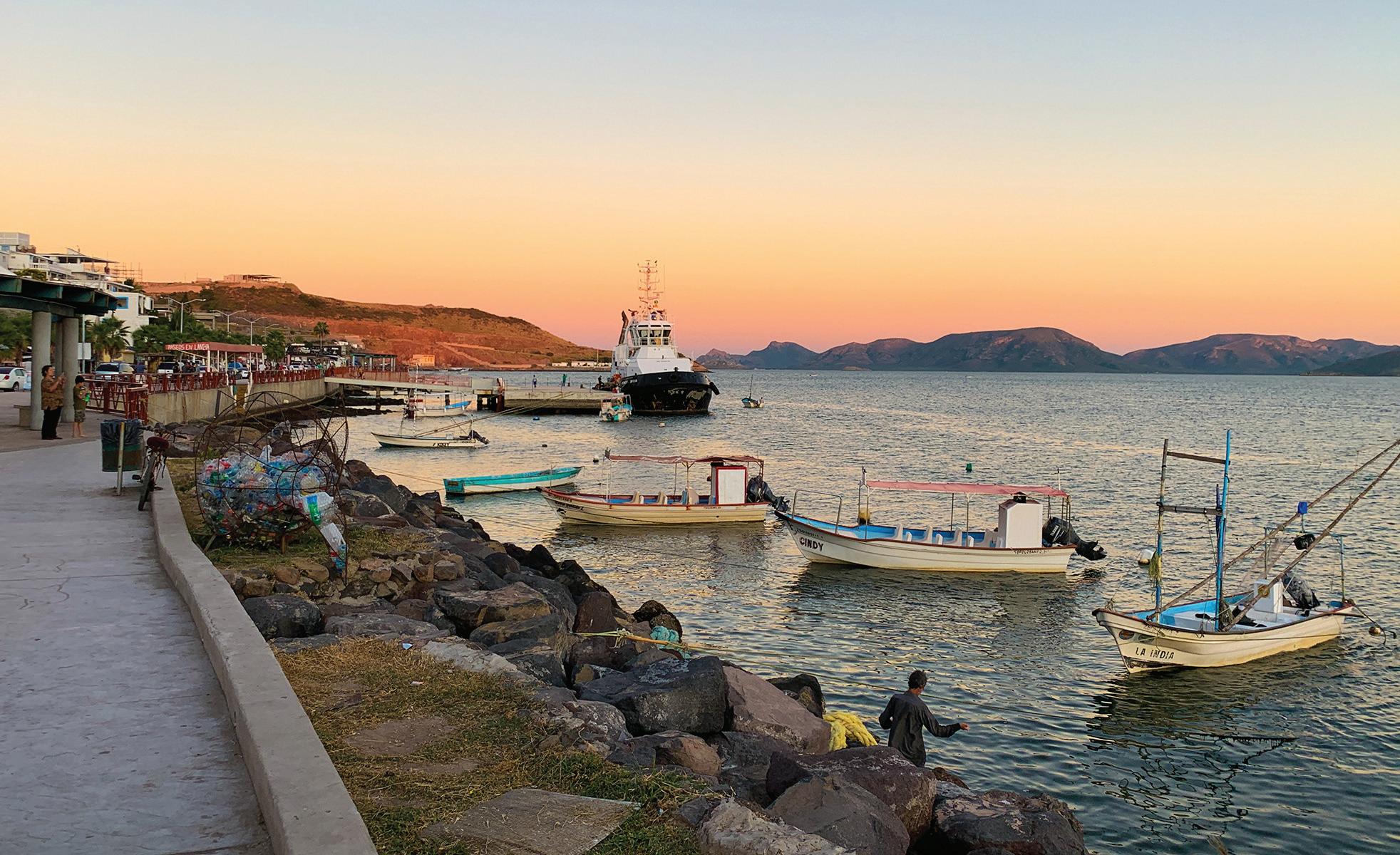
Port of Topolobampo is located in the northwestern state of Sinaloa. It serves as a key commercial and industrial hub just 200 miles from the entrance to the Gulf of California and provides seamless connectivity to the United States through cities like Nogales and Mexicali to the north, and to Los Mochis, Culiacán, and Mazatlán in the south. Its strategic position also facilitates the movement of goods to and from the eastern U.S. via two major railway lines, with comprehensive road links connecting it to the rest of Mexico.
Topolobampo plays a crucial role in supporting Sinaloa’s agricultural output and coastal shipping operations, facilitating the movement of general cargo, fuel, and passenger transport between Sinaloa and Baja California Sur. The port’s core business activities focus on the handling of oil and its derivatives (diesel and gasoline), along with general cargo, mineral bulk, and agricultural bulk
Additionally, the port is a major transportation hub for ferry passengers traveling along Mexico’s Pacific coast, including routes to and from Baja California Sur.
Guided by its 2022-2027 Port Development Master Program, Topolobampo has initiated various infrastructure projects with a focus on environmental sustainability and the adoption of new technologies. The port is also exploring new business opportunities, such as the development of a cruise ship industry.
Terminals and facilities:
• Ferry terminal : Accommodates both passengers and cargo (Ro-Pax) with a 170-meterlong dock.

• Cemex Terminal: A multipurpose facility for handling cement, fuels, raw materials, and non-explosive gases, equipped with two mechanized silos of 1,000 tons each and a rail spur.
• Topolobampo Transoceanic Terminal: Spanning over 35,000 square meters of land and 13,000 square meters of water, this terminal handles diverse products, with access by both road and rail.
• Petróleos Mexicanos (PEMEX)
Terminal: Handles oil and derivatives, featuring two berths of 156 meters each, fuel pipelines, and storage tanks.
• Insumos y Servicios Agrícolas de Occidente and Almacenadora Regional Mexicana: specialize in the handling and storage of fertilizers.
• Terminal Marítima de Topolobampo: A public port facility specializing in agricultural bulk, with a static capacity of 120,000
tons and fully mechanized systems for ship loading.
• Ienova Petrolíferos IV: A facility for hydrocarbons, petroleum products, and petrochemicals, spanning over 116,000 square meters.
• Productos Pesqueros de Topolobampo: Features a 137meter berth and handles fertilizers, liquids, and ammonia.
The port also offers three marinas for private and tourist use:
• Club Náutico de Topolobampo: Four docking positions.
• Astilleros Marina : 43 berthing positions.
• Desarrollos Marinos Mar de Cortés: 32 floating marina spaces and 24 dry marina spaces, complete with provisioning services, a restaurant, a launching ramp, and boat protection hangars.
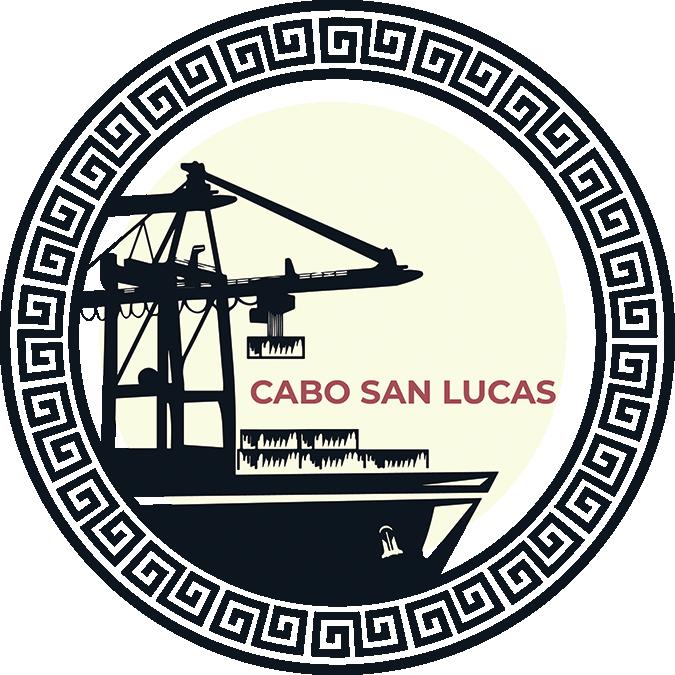

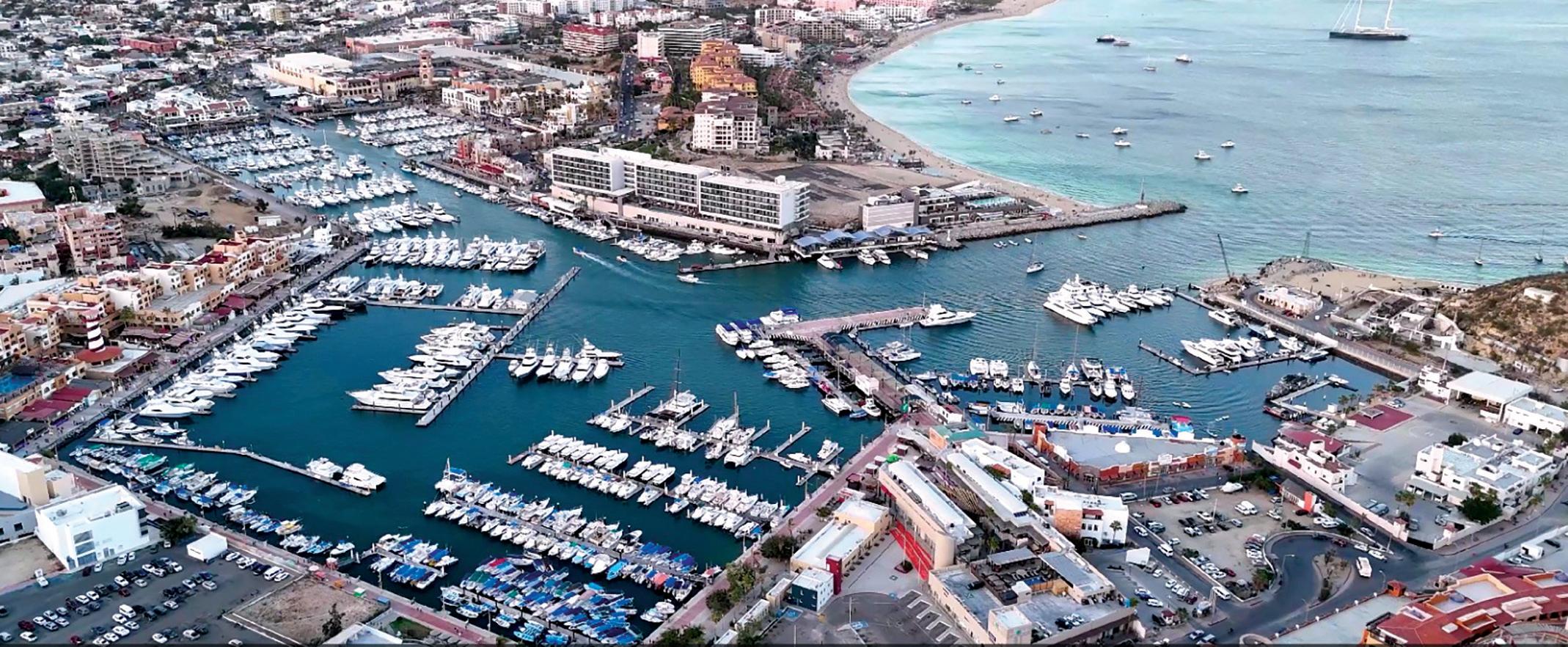

Cabo San Lucas is located along the Sea of Cortez and the Pacific Ocean in the state of Baja California Sur, and is a worldrenowned tourist destination famous for its stunning beaches and the iconic natural landmark known as “El Arco” or “Land´s End”, symbolizing the point where the Pacific Ocean meets the Sea of Cortez.
The city has a first-class marina, which received 236 arrivals in 2023, and 280 are expected this year, with more than 800,000 visitors.
The Cabo San Lucas marina stands out for several reasons. It has four anchoring positions for cruise ships, five floating docks with the capacity to accommodate up to 14 passenger vessels, including 12 with capacity for 50 people each and two with capacity

for 150 people. It also includes 11 commercial promenades filled with restaurants, bars and various options for
water activities such as diving, snorkeling and whale watching near its famous Arch.
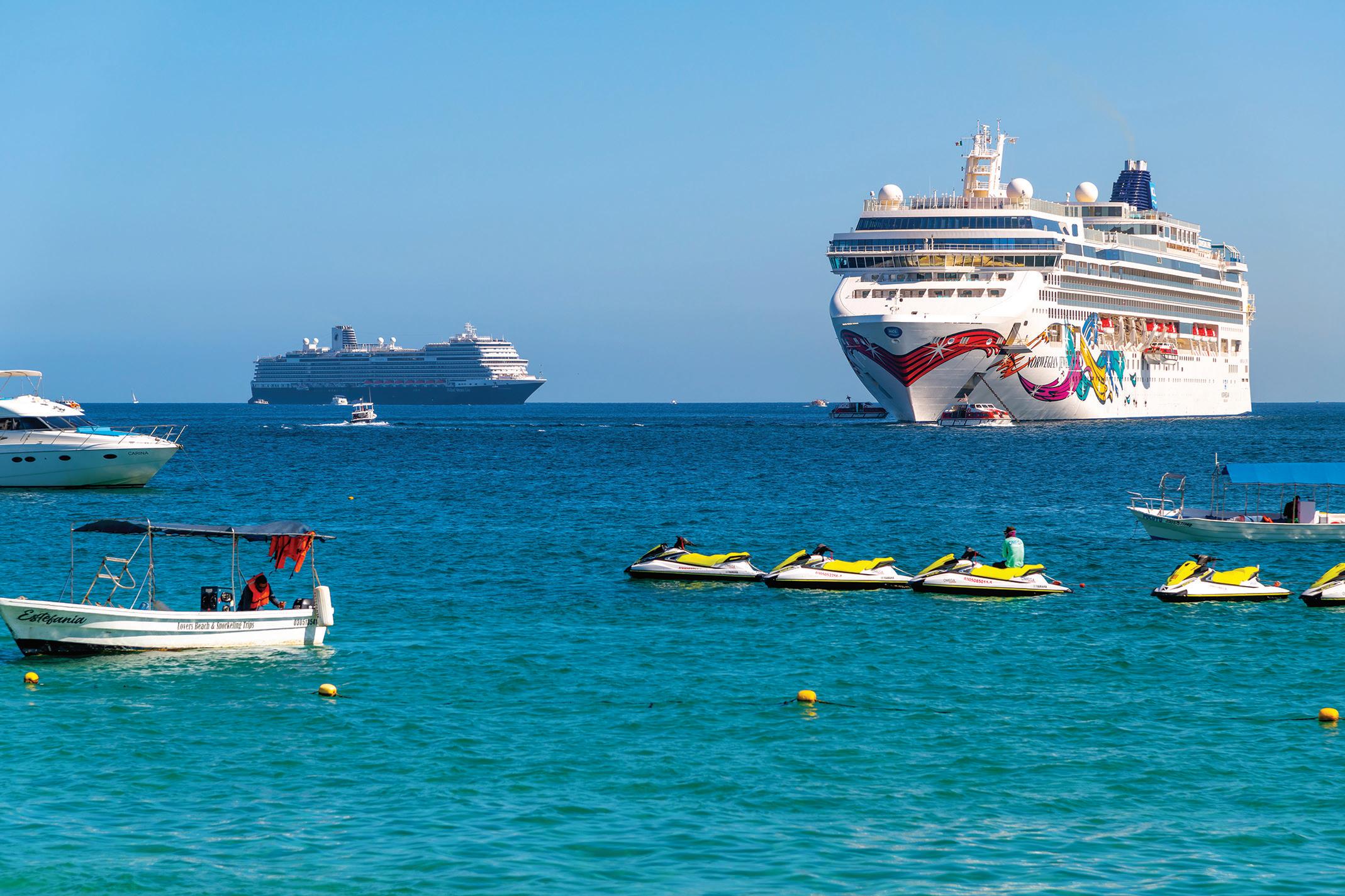
To learn more, visit visitloscabos.travel/




The Port of Mazatlán, located on Mexico’s West Coast in the state of Sinaloa, is a key hub for both tourism and cargo vessels, equipped with the necessary infrastructure for loading and unloading goods and containers. It is strategically positioned, bordered by Sonora to the North, Chihuahua and Durango to the East, and Nayarit to the South.
The port’s activities reflect the region’s predominant economic sectors, including agriculture, fish processing, animal husbandry, mining, industry, and a thriving tourism sector, which includes a popular cruise and ferry business. The port handles a diverse range of cargos such as oil and derivatives, steel products (sheet metal, plates, rods, and rails), salt, tuna, chickpeas, and fishmeal. It boasts more than 20,000 square meters of warehouse space for general cargo, plus 85,750 square meters for automobiles, and 68,000 square meters for general cargo and vehicles in the ferry terminal yard.
Mazatlán’s 14 piers and docks, ranging from 70 to 1,300 meters in length, support a variety of operations:
• Pier 1: General cargo (200 meters)
• Pier 2: Containers (200 meters)
• Pier 3: Tourism (200 meters)
• Piers 4, 5, 6: General cargo, containers, vehicles, and tourism (200–300 meters)
• Pier 7: Commercial and tourism use
• PEMEX fuel terminal
• Lace Spring Dock : Fueling (70 meters)
• Two ferry berths: General cargo and passengers (130–200 meters)
• Fishing docks: For shrimp and tuna (Mazatlán hosts the largest shrimping fleet)

• Sportfishing docks: Recognizing Mazatlán as a renowned sportfishing destination.
With its comprehensive transportation links by road, rail, and air, Mazatlán serves as a major gateway. The Northern Economic Corridor — connecting Sinaloa, Durango, Coah uila, Chihuahua, Nuevo León, Zacatecas, and Tamaulipas— is supported by the Mazatlán–Matamoros and Mazatlán–Durango highway networks. The port’s multimodal capabilities include four federal highways and the Pacific Railroad, which interconnects with the Chihuahua Railroad for daily service to Nogales, Mexicali, and Guadalajara.
Mazatlán also thrives as a tourist destination, attracting over one million visitors annually. Mazatlán International Airport serves as the primary international gateway, especially for travelers from the United States and Canada. As a cruise port, Mazatlán is renowned for its historical attractions, such as Old Mazatlán,
founded in 1531, which showcases centuries-old architecture and serves as a hub for arts and cultural performances. With a modern cruise terminal, the port offers visitors a rich experience of authentic cuisine, museums, churches, and vibrant celebrations.
Crestón Hill Park, home to one of the highest natural lighthouses in the world, is one of the top natural attractions in the region. Visitors can enjoy hiking up to 150 meters, offering spectacular views and breathtaking sunsets from the glass viewing platform at the summit. For those seeking an adrenaline-filled experience, Mazatlán is nearing the inauguration of a 1,200-meter-long zip line that crosses the sea, connecting to Vigía Hill, making it a standout tourist attraction for both local and international visitors. These features further establish Mazatlán as one of the most popular destinations along the Mexican Riviera.
Port of Puerto Vallarta is a premier, tourism-focused port, dedicated to serving both international and domestic visitors. In 2023, the port welcomed 543,609 tourists aboard 174 cruise ships at its three international docks. As part of the Riviera Mexicana route, most cruise itineraries span seven days. Beyond its iconic beaches, Puerto Vallarta offers diverse mountain landscapes that enhance its appeal with activities like hiking, off-road adventures, zip-lining, and horseback riding. These offerings position Puerto Vallarta as the leading port on the Riviera for pre-booked tours.
Nautical tourism and sport fishing are equally important sectors for the port, which served over 620,627 passengers through 37,105 tours in 2023. Highlights include stunning beaches, the protected natural area of the Marietas Islands, Los Arcos, whale watching, and breathtaking sunsets. These experiences, combined with the region’s rich culinary, architectural,
and cultural heritage, and the warm hospitality of Vallarta’s locals, reinforce the port’s slogan: Puerto Vallarta – The Most Mexican Port of Innovation and Excellence.
Originally known as Puerto Peñas, Puerto Vallarta is located in Banderas Bay, in the state of Jalisco. It is bordered by Punta de Mita to the north and Cabo Corrientes to the south. The bay offers natural protection with calm waters and a sanctuary for boats, thanks to nearby islands and reefs, including Corbeteña and the Marietas.
Known for its natural beauty and cultural richness, Puerto Vallarta is a central attraction on the Mexican Riviera. Its port infrastructure is entirely tourism-oriented, offering services related to food, handicrafts, transportation, culture, and recreation within the port area.
The port’s history dates back to 1970, when the Mexican Federal Government built the first berthing position for cruise ships and a ferry terminal. Since then, Puerto Vallarta
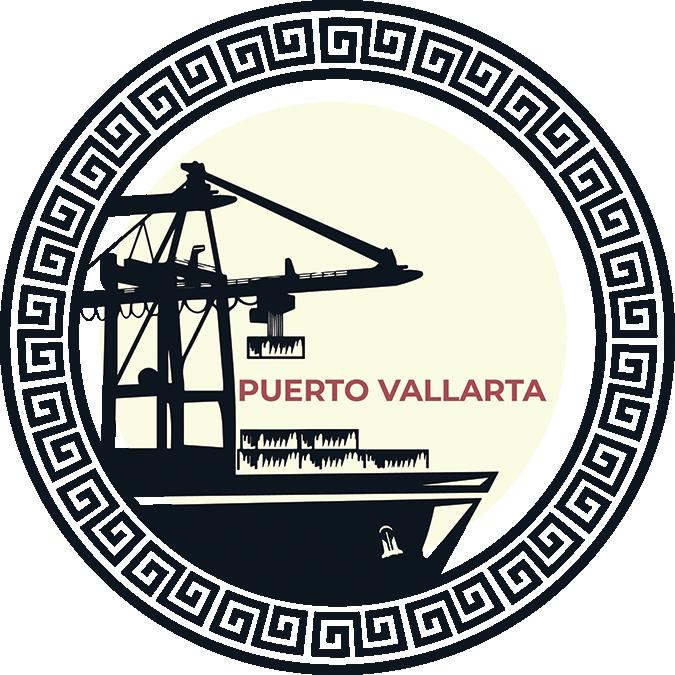
has catered to both national and international tourists seeking an authentic Mexican experience with a mix of culture, beaches, and gastronomy. Today, the port has three berthing positions and two anchoring positions, with tenders to shore. Beyond port services, Puerto Vallarta Maritime Terminal offers visitors a range of tourist and commercial amenities, including taxis, driver-guides, currency exchange, craft markets, restaurants, and tour boat tickets, all within a secure and efficient environment.

Puerto Vallarta’s alignment with cruise industry trends has positioned it as a key player in the market. The port benefits from proximity to an international airport, facilitating seamless embarkation and disembarkation for cruise passengers. The city is served by eight regular airlines and 74 charter flights.
The port serves three main lines of business:
• Cruise industry : As a top port of call on the Mexican Riviera route—which includes Cabo San Lucas, Mazatlán, and Puerto Vallarta—the port primarily caters to seven-day cruises from California (Los Angeles, Long Beach, and San Diego). It occasionally welcomes cruise ships on world tours. On Mexico’s Pacific coast, Puerto Vallarta ranks as the third largest port in terms of passengers served, after Ensenada and Los Cabos.
• Domestic tourism: Banderas Bay, where the port is located, has seen a rise in tourism activities with Mexican-flagged vessels, offering services like boat tours, diving, water skiing, snorkeling,

To learn more, visit puertodevallarta.com.mx/
and parasailing. Each year, the port serves over half a million local, national, and international tourists. The port has specialized docks to accommodate this growing domestic tourism industry.
• Tourist marinas: The port features three tourist marinas serving recreational and sport fishing boats, catering mainly to tourists from the U.S. West Coast and regional markets. The port’s 684 slips for recreational vessels are fully

occupied year-round, reflecting its popularity.
In addition, privately managed facilities include a 353-berth marina, a dry dock, a workshop, condominium marinas, and two waterfront hotels.
Puerto Vallarta’s success as a leading tourism port is a testament to its strategic infrastructure, dedication to high-quality services, and a commitment to providing a unique and memorable experience for all visitors.

The Port of Manzanillo, located in the state of Colima, is Mexico’s main gateway for international trade, particularly serving the Central and Bajio regions, which represent more than 67 percent of the country’s GDP and are home to 55 percent of the national population. It leads in container cargo national movement, handling 57 percent of all containers on the Mexican Pacific coast and 42 percent of the nation’s total.
Manzanillo’s international trade routes primarily span the West Coast of the Americas and the Pacific Rim, with major trade partners including the U .S., Canada, Japan, China, Korea, and Chile. Additionally, the port engages in significant trade with the European Continent, particularly Spain, Russia, and Germany, and maintains commercial ties with Australia.
The port covers 450 hectares, encompassing water areas, docks, and storage facilities. It operates 24 berths — 19
commercial, three for hydrocarbons, and two for cruise ships — across two zones in San Pedrito area.
Key commodities passing through Manzanillo include:
• General cargo: Steel products, fertilizers in super bags, project cargo, plywood, paper rolls, auto parts, machinery and vehicles.
• Agricultural bulk : Canola, wheat, oats, soybeans and barley.
• Mineral bulk : Urea, zinc concentrate, copper concentrate, iron pellets, and fertilizers in bulk.
• Containerized products: Ranging from minerals to food and household appliances.
To efficiently manage cargo flow, the port boasts 6.59 km of internal roads and 28.68 km of railways.
Manzanillo is home to 14 operating companies handling a diverse range of cargo, including:

• SSA Marine Mexico: The first Specialized Container Terminal in the port of Manzanillo, with 800 meters of dock, capable of handling 3 vessels simultaneously.
• CONTECON Manzanillo: Second Specialized Container Terminal operating in Manzanillo, with 72 hectares and throughput rates of 90 containers per vessel per hour. Also capable of handling three vessels simultaneously.
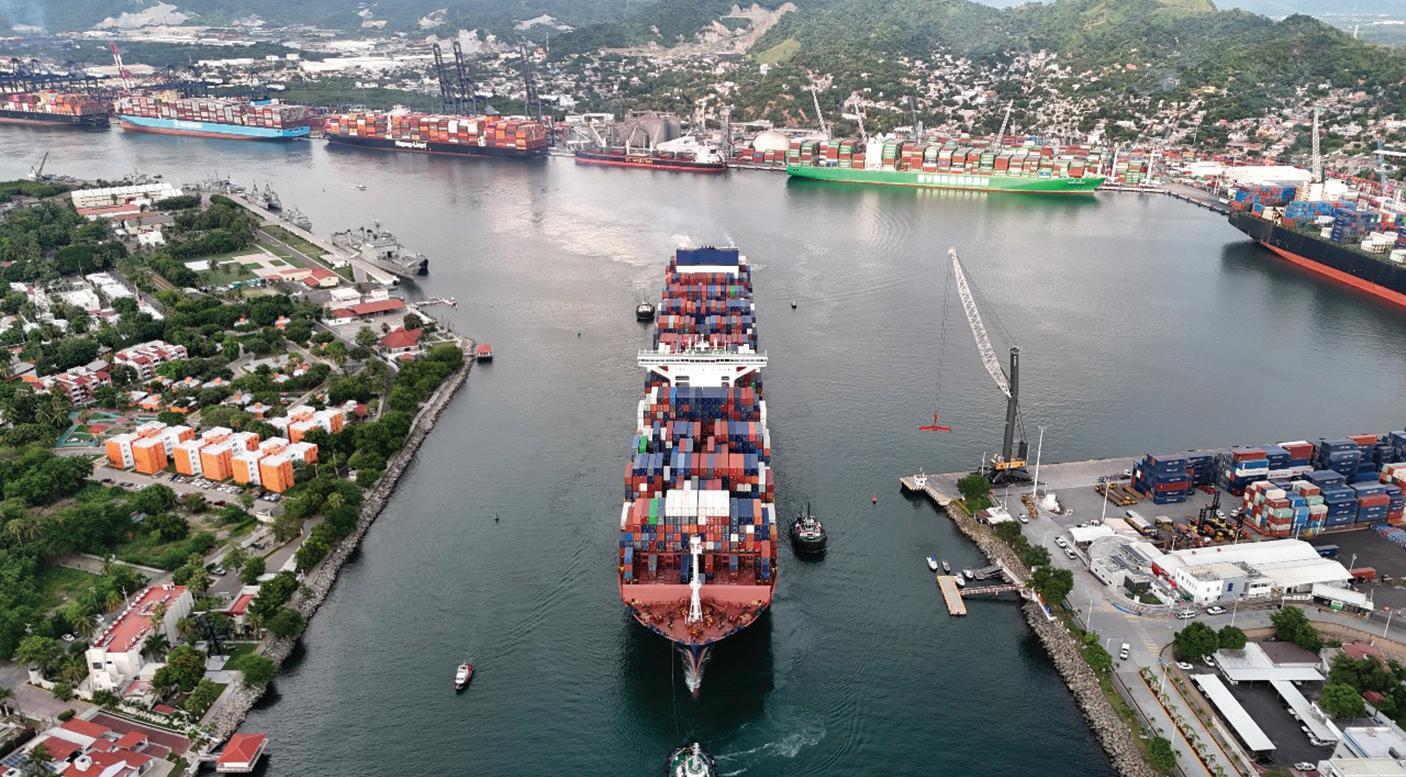
• Terminal Maritima Hazesa: Multipurpose terminal for mineral bulk and general cargo. With specialized machinery for both segments.
• Operadora de la Cuenca del Pacifico: Multipurpose facilities for general and containerized cargo.
• Terminal Internacional de Manzanillo: Multipurpose facilities for general and containerized cargo.
• Frigorifico de Manzanillo: Specialized in dry and refrigerated cargo handling, with a phytosanitary inspection point approved by Mexican sanitary authority and a 3,000-ton capacity.
• Granelera Manzanillo: Specialized terminal for agricultural bulk handling, with a static capacity of 82,000 tons.
• Comercializadora La Junta: Specialized Terminal for Handling Agricultural Bulk, General Cargo and Project Cargo.
• Corporacion Multimodal: Multipurpose facilities for general cargo.
• Servicios Maritimos PACNAV: Specialized facility for handling and storing general cargo focusing in train logistic services.
• CEMEX: Specialized facility for handling and storage of bulk cement and general cargo.
• PEMEX Logistica: Hydrocarbons Terminal.
• MARFRIGO: Fishing terminal with freezing chambers with a 3,500-ton seafood capacity.
• Terminal KMS de GNL: Reception, storage and gasification of Liquefied Natural Gas. Manzanillo has a static capacity of 80,757 TEUs and a dynamic capacity of 4,300,000 TEUs, underscoring its critical role in national and international logistics. To support the ongoing growth of the Port of Manzanillo, several key strategic
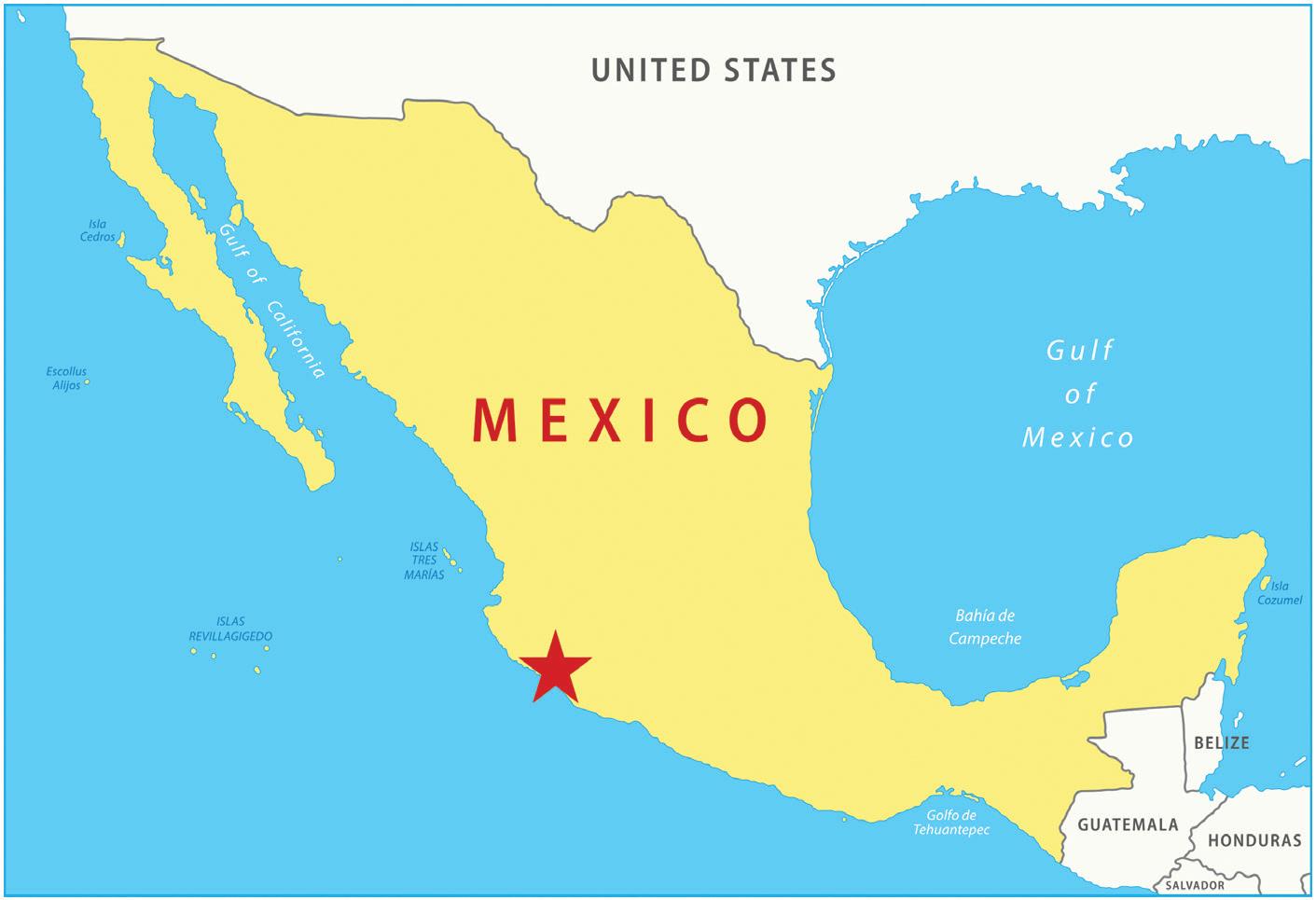
To learn more, visit puertomanzanillo.com.mx
projects are being prioritized. These include the construction of the second access route to the port, increasing the draft to 15.5 meters, and expanding the port’s infrastructure to the Manzanillo Port facilities in the Cuyutlán area.
The creation and implementation of the Smart and Secure Port (Puerto Inteligente Seguro PIS) platform positions Manzanillo at the forefront of technological innovation, setting a
benchmark for ports across the hemisphere. PIS platform earned international acclaim by winning the 2022 Maritime Award of the Americas in the Port Cybersecurity category, granted by the Inter-American Committee on Ports of the Organization of American States. This project underscores the port’s dedication to modernization, efficiency, and security. Most importantly, PIS was tailored to meet the specific needs of Mexican ports, facilitating the standardization of processes across the entire National Port System.


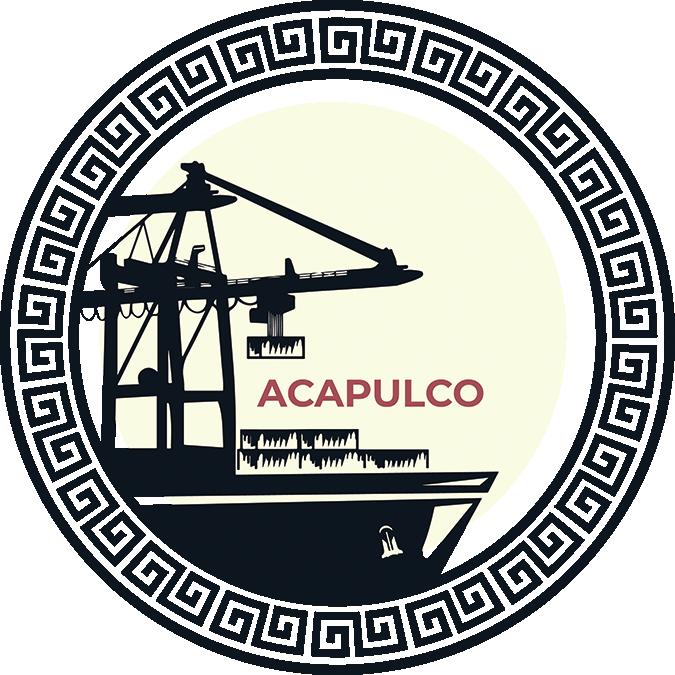



The National Port System Administration (ASIPONA) Acapulco, one of Mexico’s most iconic and historic ports, resumed operations at the end of 2023. Since then, it has welcomed nearly 100,000 passengers from international cruise ships, who have enjoyed the beauty and charm of Acapulco, “The Home of the Sun.” Additionally, it has handled over 750,000 tons of fuel, solidifying these two activities as its primary lines of business.
The Port of Acapulco is a tourist, logistical, and strategic port for the commercial development of Guerrero, Morelos, and the Mexico Valley. With a rich tradition as a worldrenowned tourist destination, the Port of Acapulco has also been a strategic point for automotive export. After the damages caused by Hurricane Otis, the port has regained its operational

capacity, tackling the challenges to not only resume but surpass its historical operational volumes. The port of Acapulco has set new goals to stimulate
the regional economy and promote development by creating direct and indirect jobs, thereby improving the quality of life for the local population.

The Port of Lázaro Cárdenas, strategically located on Mexico’s Pacific coast where the states of Michoacan and Guerrero meet, plays a critical role in the country’s industrial and commercial activities. This port serves a vast region, including key industrial areas like Queretaro, Mexico City, and Morelos. Together, they house 33 percent of the national population, generate 42 percent of Mexico’s GDP, and represent 49 percent of its manufacturing output. Its proximity to the tourist destination of Ixtapa-Zihuatanejo, just 45 minutes away, further enhances its importance as both a commercial and tourism gateway.
Spanning an area of 3,834.03 hectares, with an additional 790 hectares set aside for future expansion, Lazaro Cardenas is the deepest port in Mexico. Its access channel is 19 meters deep, and its navigation channels exceed 17 meters, making it capable of handling the world’s largest vessels and positioning it as a crucial hub in global maritime logistics.
Initially designed as an industrial port, Lázaro Cárdenas has become a key player in the global container market. Its modern infrastructure allows the efficient handling of containers,


vehicles, and mineral bulk, solidifying its role as a primary link between Asia and the Americas.
The port is well-connected via a direct highway and the Lázaro Cárdenas–Kansas City multimodal rail corridor, which includes 13 intermodal terminals and two service facilities, linking the port to major consumption centers. Key terminals and facilities include:
• Two specialized container terminals: Covering 224 hectares with five berths, these terminals have a combined annual capacity of 3.2 million TEUs.

• Three multipurpose terminals: Spanning 37 hectares, with three berths and an annual throughput capacity of 240,000 tons.
• Automotive terminal: Operated by SSA Lázaro Cárdenas, with two berths and a yearly capacity of 600,000 vehicles.
• Bulk grain terminal: Spanning 17.2 hectares, with 80,000 tons of storage and the capacity to receive vessels up to 55,000 tons.
• Two bulk mineral terminals: Covering nearly 28 hectares with three berths, one of which can handle vessels with capacities up to 165,000 tons.
• Fertilizer terminal: 3.38 hectares with two berth positions, able to receive vessels up to 60,000 tons.
• Three liquid bulk terminals: Covering 34.5 hectares and operated by Pemex, AAK Mexico, and GEN Manejos Integrales, these terminals handle oil products, vegetable oils, and waste materials.
• Coal terminal: 120 hectares, capable of servicing vessels up to 165,000 tons.
In addition to its terminal operations, the port offers ample storage facilities, including a health inspection checkpoint with space for 120 containers, and refrigeration and freezing chambers.
In September 2024, Lázaro Cárdenas ranked 2nd nationally in terms of commercial cargo movement, handling 20,965,207 tons, excluding oil and its derivatives. This figure includes containerized cargo, minerals, vehicles, and bulk grain, among others. The port also ranked 2nd by achieving a remarkable 29% increase in containerized cargo, handling by September this year 1,764,679 TEUs. This surpasses the 1,358,177 TEUs recorded in the same period of 2023.

The region around Lazaro Cardenas is highly connected, with over 31,581 kilometers of roads and 36,576 kilometers of railways. The area is serviced by three international airports and seven local airports, with one just 15 minutes from the port and another international airport an hour away. The port also boasts maritime connections to over 90 countries and more than 200 ports worldwide.
In 2024, Lázaro Cárdenas completed several infrastructure projects,
including the construction of a public dock in the southwest channel, aimed at enhancing domestic maritime connectivity. The port also added a dock for minor vessels and tugboats and completed a new cargo exit road.
Continued investment from major global players like Hutchison Ports Holdings, APM Terminals, SSA Marine, and Glovis Hyundai demonstrates the port’s commitment to growth and its evolving role in both regional and international maritime logistics.

Located in the northern part of the Gulf of Tehuantepec in Oaxaca, the Port of Salina Cruz is a vital multimodal hub that provides the fastest maritime link between the Pacific Ocean and the Atlantic via the Port of Coatzacoalcos.
It is on track to become a significant commercial logistics port for international maritime trade routes, thanks to the expansion and modernization of its infrastructure and equipment. Its interoceanic connectivity through the services provided by the Multimodal Logistics Platform and the federal government’s support for various industrial projects in Southern and Southeastern Mexico further enhance its potential. This key corridor plays a crucial role in facilitating freight traffic across the country, bolstering Mexico’s trade routes.
Infrastructure and cargo handling
Salina Cruz is equipped with modern infrastructure and advanced equipment
to handle various types of cargo, including containerized goods, agricultural and mineral bulk, and petroleum products. Although classified as a regional port, its strategic role in fuel supply and cargo transport elevates it to national significance, processing around five percent of Mexico’s total maritime freight.
Key facilities and terminals
The port features a versatile range of facilities, including:
• A multipurpose terminal capable of accommodating large vessels.
• A fishing zone with seven piers built on breakwaters and a marginal pier dedicated to serving the fishing industry.
• An oil and derivates terminal for loading crude oil and its derivates, gas, and a dedicated tanker dock for handling liquid petroleum products.
• A naval repair facility, including two marginal docks for afloat repairs, a dry dock, a synchro elevator in a government-owned shipyard.

Port terminals and facilities operated by the National Port System Administration
Multipurpose terminal: Located on the “East” breakwater, this terminal features a reinforced concrete pier stretching 275 meters long and 21 meters wide, with a depth of -11 meters. It can accommodate vessels up to 197 meters in length and 32 meters in width. The terminal has a 5.6 ha of a bounded multiuse storage yard equipped with connections for refrigerated containers, along with

24-hour surveillance and lighting systems.
Pier I: This dock, situated at the southern end, has a useful length of 450 meters and a width of 60 meters, with a maximum depth of -10 meters. It can handle vessels up to 180 meters long and 28 meters wide. The dock also features rail tracks and three warehouses with a combined storage space of 11,000 square meters.
Fishing pier: In the inner basin, the east marginal fishing pier extends 260 meters, constructed with reinforced concrete on piles, providing essential infrastructure for the fishing industry.
Additionally, the port has a 14.23-hectare reserve adjacent to the multiuse storage yard, offering significant potential for future development, such as expanding logistics infrastructure or handling containerized cargo.
PEMEX-operated terminals
Dock II: On the south side of the port, Dock II has a total length of 465 meters and a width of 60 meters, with a depth of -10 meters, allowing vessels up to 180 meters in length and 28 meters in width.
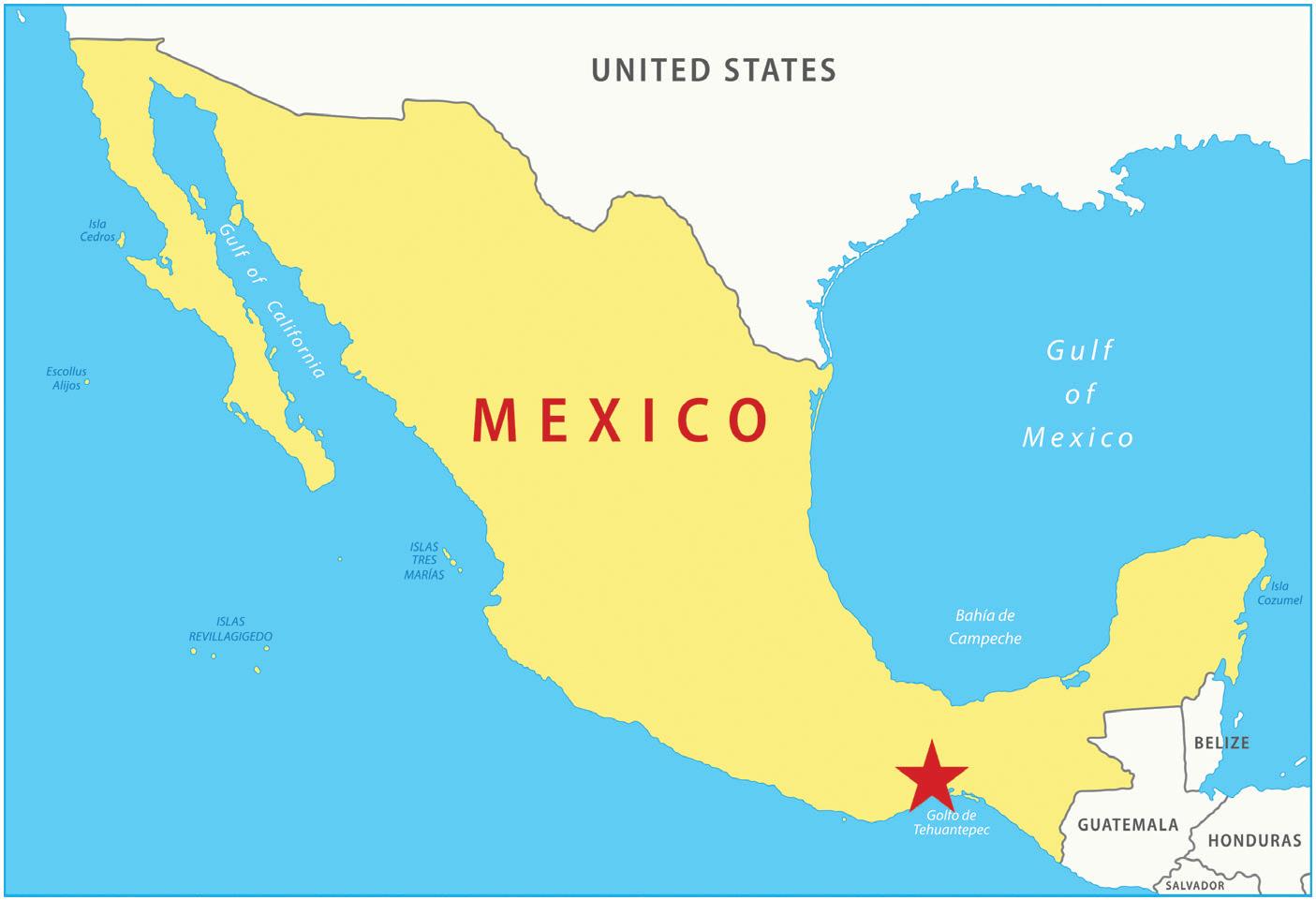
Pier No. 7 LPG: Situated on the west breakwater, this 277-meter-long pier is designed to handle petroleum products. With a depth of -11 meters, it can berth vessels up to 197 meters in length and 32 meters wide.
Pier No. 9: Situated on the Oil and Commercial Port, this 535-meter-long pier is designed to handle petroleum products. With a depth of -18.0 meters, it can berth vessels up to 230 meters in length and 32.3 meters wide.
In June 2024, Salina Cruz began agricultural bulk operations with the arrival of the 104-meter-long Mexicanflagged vessel Mar de California , transporting corn from the Port of Topolobampo. This development is part of a broader federal initiative to enhance the efficiency of the Interoceanic Corridor by integrating rail services and improving port connectivity.
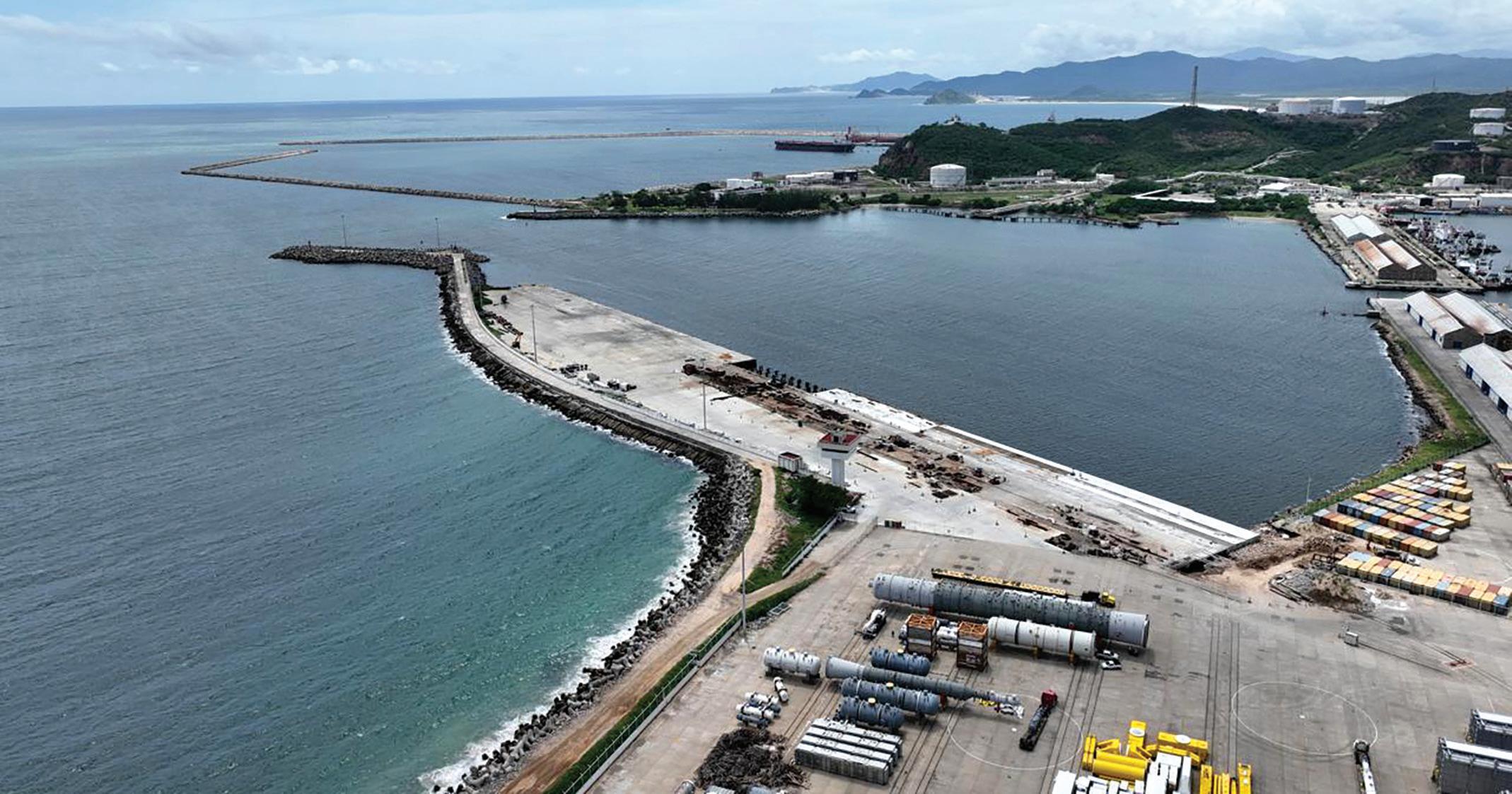
Puerto Chiapas, located in the southernmost region of Mexico in the state of Chiapas, sits just 32 kilometers from the city of Tapachula, a key municipality with over 400,000 residents. The port serves a much larger area, influencing approximately 40 million people, and is well-connected via key transportation routes. With an international airport only 11 kilometers away and a direct rail link to the maritime terminal, Puerto Chiapas boasts excellent land, air, and rail connectivity. This makes it an essential point for maritime transit to major global destinations, including the U.S. West Coast, Central and South America, and even Asia.
Puerto Chiapas is equipped with robust infrastructure to support the docking and handling of large vessels. The port features a 625-meter berthing strip, a 3,155-meter navigation channel with a width of 350 meters, and an access channel of 100 meters with a uniform draft of 11 meters. This makes it possible to accommodate
first and second-generation container ships, bulk carriers with a capacity of up to 30,000 tons, and roll-on/roll-off (RO-RO) ships with similar capacities.
Covering a total area of 120 hectares, Puerto Chiapas is an appealing destination for shipping lines, exporters, and importers, noted for its commitment to quality, environmental sustainability, and safety.
The port also features nearly 45,000 square meters of storage space, which includes a 194-meter-long shed and 77,543 square meters of yard space, providing ample capacity to handle a wide variety of cargo efficiently.
Puerto Chiapas is managed by the National Port System Administration under ASIPONA Puerto Chiapas, which oversees port operations and provides the necessary infrastructure to facilitate foreign trade and tourism. With its prime geographic location and modern facilities, Puerto Chiapas is a hub for business development. The port supports various industries through its multipurpose, container,

and agricultural bulk terminals, in addition to fishing docks and a dedicated cruise ship terminal.
Puerto Chiapas offers a range of specialized terminals to handle diverse cargo and tourism needs:
• Multipurpose terminal: Featuring 150 linear meters of docking space, this terminal handles various types of cargo, including tuna, bananas, corn, wheat, fluids, ore, and scrap materials.
• Container terminal: With 250 linear meters of space, the container

terminal is equipped to handle containerized goods, offering bonded warehousing and the ability to store up to 1,800 containers, including space for 250 refrigerated containers.
• Agricultural bulk terminal : This terminal, developed through private investment, spans 102,500 square meters and has a storage capacity of 26,000 tons across four silos of 6,500 tons each. It is equipped with scales, warehouses, and 10,000 square meters of maneuvering yards.
• Fishing piers: Situated within the port’s industrial park, the three breakwater piers (160 meters and 180 meters in length) support largescale tuna production. Facilities in the area produce over 112 million cans of tuna and nearly 23 million bags of tuna annually.
• Comprehensive cruise service center: This terminal, designed for cruise ships up to 311 meters in length, offers tourists a variety of amenities, including guided tours,

To learn more, visit puertochiapas.com.mx
restaurants, bars, pools, and local transport options.
• Industrial park : Spanning 301 hectares, the park includes urbanized lots ranging from 5,000 to 10,000 square meters for industrial, commercial, and service developments. The park also features 27 hectares of bonded warehousing to support logistics and industrial activities.
In October 2024, Puerto Chiapas added a new business line with the handling of soybean oil, following the arrival of the MV Bochem London. This marked the port’s entry into liquid bulk activities, further expanding its role in Mexico’s industrial and trade sectors. The handling of soybean oil is now the port’s sixth business line, highlighting its continual growth and its importance as a hub for foreign trade.
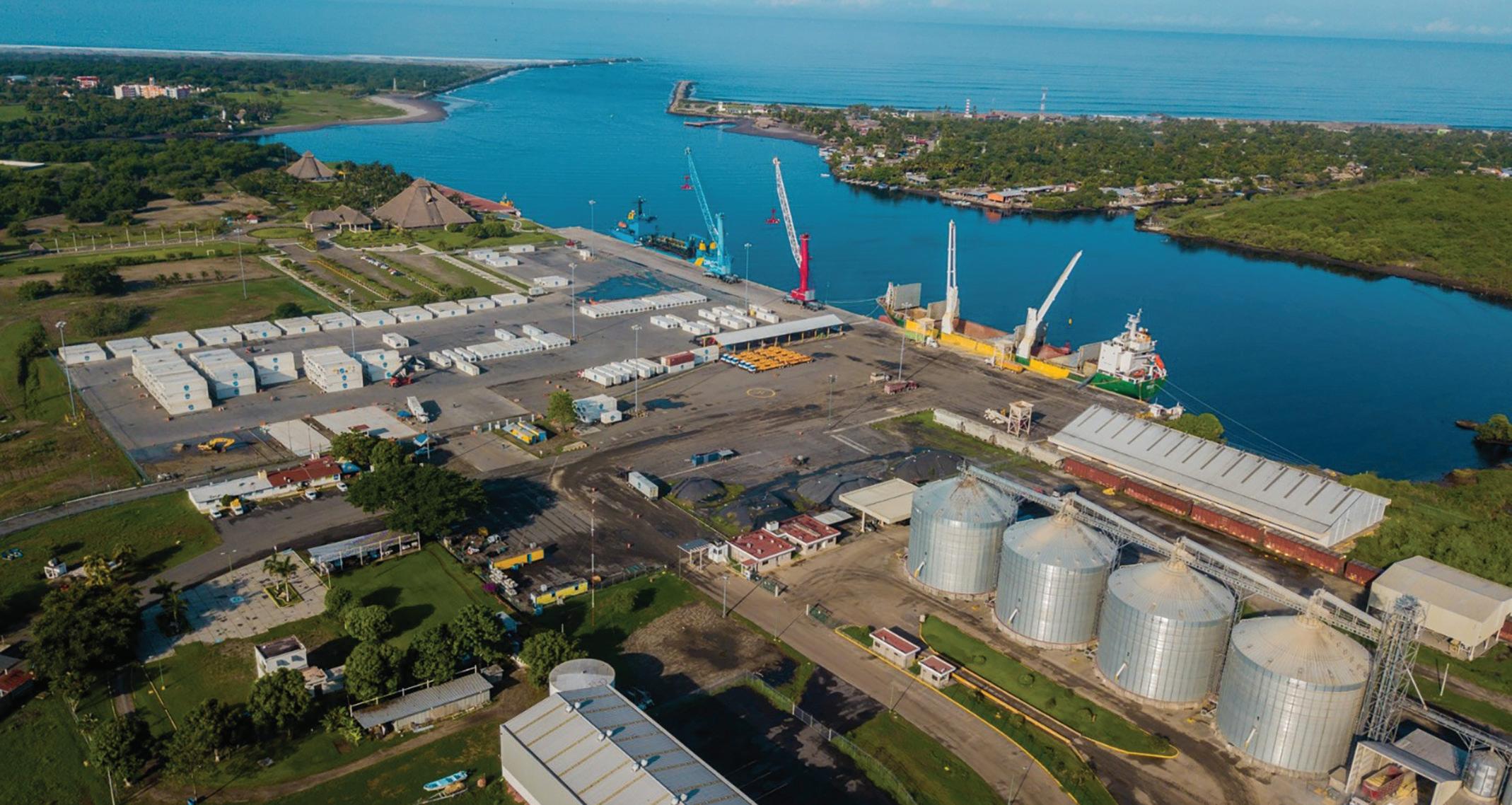
Green technologies and reducing carbon footprints, recapitalizing facilities and integrating grant strategies with redevelopment strategies, focusing on infrastructure, especially maintenance of aging structures…these are just a few of the issues that Executive Director Lisa Lefeber lists as priorities for the Port of Everett, located at the mouth of the Snohomish River in Washington.
As the APP’s newest Port Member, Lefeber hopes to hear from other port representatives on their own experiences with the same issues. “We’re not the only ones facing challenges,” Lefeber said. “And while we’re a very different port from, say Seattle or Long Beach, the issues we all have are similar.” Indeed, sharing best practices and solutions to these issues is what the APP is all about.
The Port of Everett celebrated their 100th anniversary in 2018. Looking

back to 1918, the citizens of Everett were hoping to capitalize on the maritime boom caused by World War I and voted to establish the Port. The war ended a few months following the referendum and the Port of Everett instead became a major lumber and shingle trader. Commercial fishing also played a significant role in the early development of the Port with the


first canneries opened in the 1920s, followed by fish-processing facilities in the 1940s.
The 1940s also saw the establishment of the Everett-Pacific Shipbuilding and Dry Dock Company which became an important part of national war efforts, but it was facilitating the import of parts for Boeing aircraft starting in the 1960s that set the stage for the future of Everett, leading to the development of several terminal facilities.
In the 1980s, the Port sold acreage to the U.S. Navy for a new military installation. As one of 13 ports identified as part of the Navy’s Strategic Homeport Initiative, Naval Station Everett (NSE) saw no fewer than seven naval ships assigned to the base as well as U.S. Coast Guard vessels. Today, the NSE is



Located 25 miles north of Seattle, the Port of Everett is the second largest export customs district in Washington State and ranks fifth overall on the U.S. West Coast.
a major contributor to the Snohomish County economy — for the fiscal year 2017, the Station contributed almost $300 million to the region and supported almost 4,000 jobs.
The Port of Everett today
The Port of Everett supports more than 40,000 jobs and contributes $433 million to state and local taxes. The three-member Port Commission is responsible for establishing policy and planning for the Port, including a five-year Capital Improvement Plan and associated budgets. At present, the Commission includes:
• President Tom Stiger is currently on his fourth term, Mr. Stiger was born and raised in Everett and enjoyed a 27-year career at the Everett School District where he was a teacher and administrator (including as principal of two local high schools). He also owns local family businesses, including Abbey Carpet & Floor / Bayside Supply in Everett and Major Brands Floor Supply in Seattle.
• Vice President David Simpson was first elected to the Port Commission
in 2019. He graduated from the University of Washington with a degree in U.S. History and brings more than 45 years of combined public/private sector experience to the Port, including 30 years in the aviation industry with 24 years in manufacturing engineering for The Boeing Company and another six years as an aviation mechanic for the U.S. Navy.
• Secretary Glen Bachman was elected in 2013 and has extensive experience in retail property management. He grew up in Seattle and obtained various business administration credentials from both Everett Community College and Eastern Washington University. He sits on the board of the Washington Retail Association and is also a member of the International Council of Shopping Centers, a past ICSC Western Regional Government Relations Chair and a past Western Washington International Real Estate Management Association President.
The Port Commissioners are active in the industry, each participating on a variety of boards and committees including participation with the Aerospace Futures Alliance, American Association of Port Authorities, Economic Alliance Snohomish County, Greater Seattle Partners, Pacific Northwest Aerospace Alliance, Pacific Northwest Waterways Association, Puget Sound Partnership, Puget Sound Regional Council, Washington Council on International Trade, Washington Public Ports Association and more.
Under their guidance, Executive Director Lisa Lefeber has led the Port to new heights. Promoted from Deputy Executive to the new position in 2019, Lefeber originally joined the Port in 2005 as Chief of Policy and Communication. In 2016, she was selected to lead the Port’s seaport modernization efforts, which included more than a $100 million in infrastructure investment. She is a seasoned professional with a Master’s Degree in Public Administration from Seattle University and an undergraduate degree in journalism from Western Washington University.
The Port of Everett has three main lines of business — international shipping terminals, marina facilities, and real estate development. The
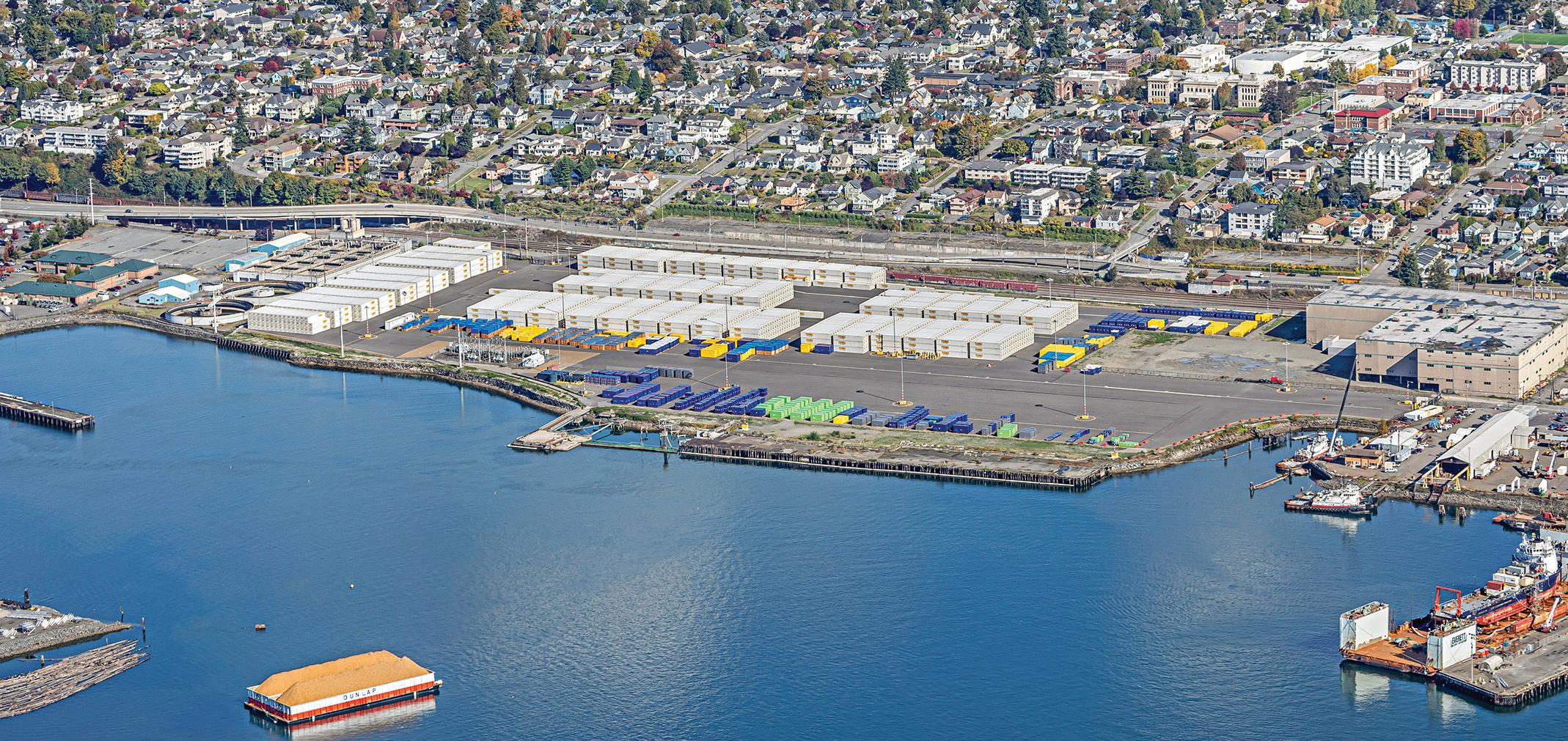
following is a brief outline of these sectors.
Located 25 miles north of Seattle, the Port of Everett is the second largest export customs district in Washington State and ranks fifth overall on the U.S. West Coast. It is the third largest container port in Washington and a designated MARAD Strategic Commercial Seaport — one of only 18 nationwide. “We’re very much a breakbulk facility, handling high-value conventional and oversized cargo,” said Lefeber, noting that the Port serves as an extension of the aerospace manufacturing process for Boeing and accommodates all oversized, ocean-going components for the 767, 777, 777X and K-C Tanker airplane programs. “We don’t have a regular liner service which means we’ve learned to be extremely flexible with our infrastructure and equipment to be able to adapt to any new cargo opportunity that comes up.”
As the closest facility to the Far East, Alaska and Canada, Everett’s Seaport supports nearly $21 billion worth of U.S. exports annually. They are located
on the BNSF mainline and are recognized for their quick turnaround times and lack of seaport congestion as well as an excellent on-dock rail with 12,500 lineal feet (lf) of rail capacity spanning the length of the shipping terminals.
In total, the Port has eight shipping berths spanning over 125 acres of seaport facilities including 58,000 square feet (sf) of covered storage.
• The primary container and breakbulk facility — Pacific Terminal — has 650 feet of usable berth length with a 12-meter water depth at pier, a 15-acre paved and lighted yard plus two 40-ton gantry cranes plus 100-ton and 150-ton mobile harbor cranes.
• The South Terminal is the Port’s most modern facility and supports container, RO-RO, breakbulk and project cargoes. It has a 700-foot wharf berth, a 900-foot RO-RO berth and is support by two 100-foot-gauge container cranes plus a 13-acre paved and lighted yard space as well as 22,000 sf of transit shed and its rail spur connects into the BNSF mainline.
• Pier 1 North and South offers two berths with lengths of 600 feet to support containerized, breakbulk, RO/RO and forest product cargoes. If has 100-ton and 150-ton mobile harbor cranes plus four rail spurs and 12,500 lf of terminal rail, direct BNSF mainline access and a locomotive pusher. There is a 15-acres paved and lighted yard plus a 36,000 sf multipurpose warehouse facility.
• Pier 3 North and South provides for another two 650-foot berths, accommodating general, breakbulk and project cargoes, forest products and bulk cement handling. Like Pier 1, it also has a 15-acre paved and lighted yard but also has a 55,000-ton bulk cement storage dome.
• Mount Baker Terminal, located in South Everett, is the Port’s satellite shipping facility that serves regular aerospace cargo shipments between Japan and Everett. The on-dock rail has direct access to the BNSF mainline and includes a 50-ton, railmounted straddle gantry crane.
The Port of Everett Marina is the largest public marina on the West Coast with 2,300 permanent boat slips and an additional 5,000 lf of guest moorage.
• Hewitt Terminal, primarily used for shipyard work, has an 815-foot berth and is adjacent to a 36,000 sf upland warehouse.
• Norton Terminal is a new, 40-acre cargo terminal with a 40-acre paved, lit and secure cargo yard and infrastructure to support shortsea shipping. It has the potential for adaptive reuse of an existing 396,000 sf warehouse
The Port of Everett Marina is the largest public marina on the West Coast with 2,300 permanent boat slips and an additional 5,000 lf of guest moorage. Permanent moorage options range
from 20 to 143 feet and with both open and covered options. Guest moorage of more than 5,000 lf is steps away from world-class amenities, restaurants and outdoor activities.
Marina facilities include a six-acre, environmentally compliant work yard that is paved, fully fenced, well-lit and includes 72 full-service stalls equipped with power and water. The facility is available for either do-it-yourself or professional work and has retail, service and repair businesses nearby as well as boat sales and storage, canvas and upholstery, engine repair and parts, marine supplies, woodwork, paint and more.
The jewel in the crown at the marina is the largest boat launch in
Washington State. With 13 lanes and ample parking, the launch can accommodate everything from small power boat to kayaks.
Another key part of the Port of Everett’s portfolio is the 3,300 acres of property it owns and manages to promote and benefit regional economic activity, create jobs and support a healthy environment. With roughly half of the acreage developed for international shipping facilities, marine transportation, light and heavy industry, commercial mixed-use, and recreational boating, the other half of waterfront property is dedicated to tourism and public access and habitat sites. The area boasts more than four miles of continuous waterfront trail system, picnic shelters, parks and plazas, a splash fountain, and

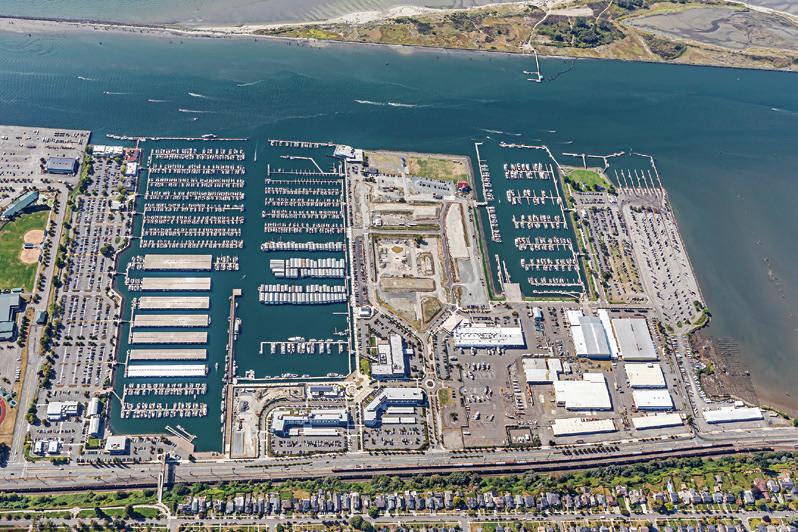
year-round special events including waterfront concerts, outdoor movies, car shows, festivals, half marathons and more. The area is also well known for bird and wildlife watching, kite flying, kiteboarding, kayaking and stand up paddleboarding.
Of particular note, the Port of Everett’s Waterfront Place is a new 1.5 million square foot mixed-use development being developed across 100 acres surrounded by its marina facilities. “We have a very deliberate strategy of incorporating public/private mixed use in and around our working waterfront,” said Lefeber, adding that it is important to the Port Commission to deliver a balanced waterfront. “The Port of Everett is the master developer and, upon completion, the project is expected to generate more than $1 billion in public-private investments plus support more than 2,100 direct, indirect and induced jobs, and generate $8.6 million in additional tax revenue.”
At completion, Waterfront Place will include 63,000 square feet of retail/ restaurant space, another 20,000 sf of marine retail, 447,500 sf of office, two waterfront hotels, and up to 660 waterfront housing units, new trails and regional parks, public gathering spaces, a variety of fine and casual dining, local shops, and marine sales and services. To date, the Port has facilitated more than $350 million in public/private investment, with more underway today.
A key milestone for the Port of Everett was reached with the Strategic Seaport Designation received from the U.S. Department of Defense. “We are one of only 18 ports in the entire U.S. that have this designation,” said Lefeber. “Our facilities can be ready within 48 hours for mobilization in support of Naval Station Everett. We had worked
A key milestone for the Port of Everett was reached with the Strategic Seaport Designation received from the U.S. Department of Defense.
on this for many years and our Capital Improvement Plan has been built around identified deficiencies. Norton Terminal, our newest cargo terminal was the final piece that allowed us to earn the designation in 2021.”
The Port’s Capital Improvement Plan is a rolling five-year strategy set by the Port Commission to enhance Port business lines and support jobs, trade, commerce and recreation. The current plan (2024 to 2028) includes 46 projects that cover such initiatives as modernizing the Seaport to support the movement of commerce with a focus on green technologies; building out public infrastructure and mixeduse elements at Waterfront Place; recapitalizing and upgrading marine infrastructure; exploring new economic development opportunities; and cleanup of legacy contamination along the waterfront.
Top of mind for Lefeber is the focus on integrating grant strategies with redevelopment strategies to be able to achieve the goals of reducing the Port’s carbon footprint while continuing to serve customers in a competitive market. “This is especially true when looking at the Seaport and its infrastructure needs,” said Lefeber. “Because the cargo we handle doesn’t fall within a regular liner service, it makes budgeting a challenge.” Lefeber added that other issues have an impact on budgets and capital planning – specifically, a small district boundary which limits borrowing capabilities, the current Boeing strike which impacts Port activity, and restrictions on foreign investment due to its proximity to Naval Station Everett. Going forward, the Port is looking to rely more on state and federal funding.
Another focus for Lefeber and the Port Commission is the maintenance of the public marina. “With the exception of our North Marina and some newer portions of our Central Docks, the original infrastructure dates back to the 1960s through to the 1980s,” she said. “There are challenges in addressing the regulatory side of projects – permitting and mitigation for maintenance projects that can delay or add as much as 30 percent on to a planned project.”
Lefeber balances the challenges of achieving the Port’s goals with ensuring the community understands the importance of the Port. “We spend a lot of time engaging with the community and being responsive to their needs,” she said. “Our philosophy is to be as transparent as possible when it comes to port activities. While we may not always agree with each other, it’s important that the community is aware of and understands why we’re doing what we’re doing.” She added that the Port is always looking for ways to integrate “fun” things for the community – free concerts and waterfront events – to further foster its relationship with the public and provide visibility into the Port’s regional value. “We’re always looking for ways to connect so that when issues do arise, we’re able to have meaningful dialogues.”
From the APP’s perspective, members of the Association will be well served by the insights and ideas of Lefeber and the Commissioners at the Port of Everett. We look forward to working with you!
By Innovate BC
Victoria-based MarineLabs is utilizing its AI-driven marine weather data platform as part of three new innovation projects, funded through the Province’s Integrated Marketplace program, delivered by Innovate BC, that are improving productivity and enhancing the health and safety of operations at the Port of Vancouver and the Port of Prince Rupert.
Each project showcases a distinct application of MarineLabs’ real-time and predictive coastal intelligence delivered through their flagship product, CoastAware, which provides users with hyper-localized weather insights, real-time coastal images and other actionable data. MarineLabs’ integrated technology solutions and machine learning delivers high-resolution coastal data to support safer decision-making for maritime operations.
“There is tremendous talent in B.C. when it comes to technology,” said Brenda Bailey, Minister of Jobs, Economic Development and Innovation. “Through the Integrated Marketplace program, we’re helping B.C. based companies scale up their technology solutions to strengthen our economy and make life better for people, while helping them improve their productivity and competitiveness.”
“The Integrated Marketplace is a catalyst for transformative innovation, connecting key industries with B.C.’s brightest minds to tackle the most pressing challenges faced by British Columbians,” said Peter Cowan, President and CEO of Innovate BC, “These projects are a great example of how local innovation can strengthen
MarineLabs’ integrated technology solutions and machine learning delivers high-resolution coastal data to support safer decision-making for maritime operations.
the productivity and competitiveness of the province’s most significant sectors while also making industry operations safer.”
Created to help drive innovation in the province, the Integrated Marketplace links strategic partners operating at testbeds like the Port of Vancouver and the Port of Prince Rupert, to B.C.based solution providers to implement, scale up, and export B.C. technology solutions. This framework allows B.C. industries to receive assistance and reduce the risks in adopting innovation and new technologies while connecting these solution providers with valuable Canadian reference customers that support their growth.
CoastAware Weather Intelligence and BuoyCam for the Passenger Ferry Service at the Port of Vancouver Headquartered in Nanaimo and with operations at the Port of Vancouver testbed, which is overseen by the Vancouver Fraser Port Authority, the Vancouver Island Ferry Company (VIFC) is utilizing CoastAware to optimize the Hullo Ferry passenger service between Vancouver and Nanaimo. By leveraging real-time wave, wind and coastal data collected along the ferry route, VIFC can make more informed scheduling decisions, improving the reliability and safety of the service.

The Pacific Pilotage Authority is harnessing CoastAware to make more accurate decisions on scheduling marine pilots for embarking and disembarking vessels.
Historical Insights for the Terminal Development at the Port of Prince Rupert
Producer and distributor AltaGas is developing plans for a new export terminal located within the Port of Prince Rupert testbed which is overseen by the Prince Rupert Port Authority. Using historical data accessed through CoastAware, AltaGas is optimizing engineering decisions to ensure the construction and design of the proposed facility is safer, more cost effective and efficient.
CoastAware Weather Intelligence and BuoyCam for Pilot Transfers at the Port
of Prince Rupert and Port of Vancouver
The Pacific Pilotage Authority (PPA) is harnessing CoastAware to make more accurate decisions on scheduling marine pilots for embarking and disembarking vessels. Employing realtime weather data specific to the pilotage areas within the Port of Prince Rupert and the Port of Vancouver, the PPA can mitigate safety risks during pilot transfers.
Through these different use cases, MarineLabs is continuing to improve and scale its real-time and predictive coastal intelligence platform for other potential customers with similar needs. The data collected in each of these
projects is also contributing to advancing MarineLabs’ machine-learning models, continuously improving the reliability and accuracy of its coastal weather forecasting for users.
“The Integrated Marketplace is an excellent initiative that is allowing regional ports and operators to test the leading edge of technology to improve the safety and efficiency of their operations,” said Dr. Scott Beatty, CEO of MarineLabs, “Our regional maritime operators, who navigate and build infrastructure in some of the world’s most challenging conditions, set a global standard for maritime safety. MarineLabs is proud to support them with hyper-local real-time, historical, and predictive coastal weather intelligence. Given the complex and extreme nature of the B.C. coast, these casestudy demonstrations of our technologies are a launch pad for our expansion
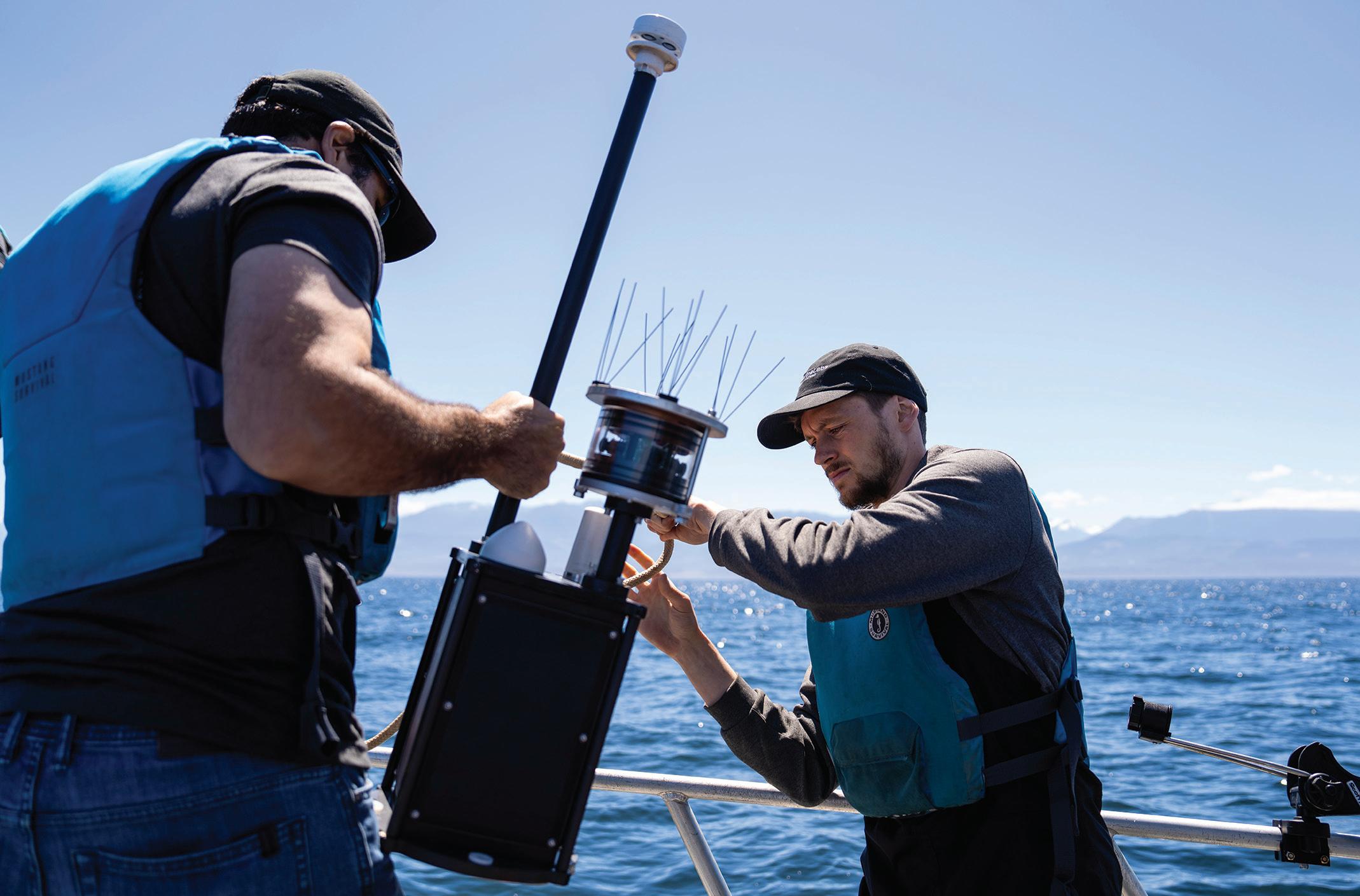
into international markets that will help us in our mission to protect the world’s coastlines.”
This announcement is part of the Government of B.C.’s investment of $11.5 million, and the Government of Canada’s investment, through PacifiCan, of $9.9 million in the Integrated Marketplace. It follows the recent announcement of new self-driving robotic pods being tested at Vancouver International Airport (YVR), which aims to enhance accessibility for travellers with mobility needs.
CoastAware Weather Intelligence and BuoyCam for the Passenger Ferry Service at the Port of Vancouver
CoastAware gives VIFC access to real-time wave and wind data, along with 360-degree coastal images collected by newly placed sensors located at the ferry terminals in the Port of Vancouver and Nanaimo, as well as five other targeted locations on the ferry route across the Strait of Georgia. The live views of ocean conditions and real-time and year-round data collected by the sensors allows VIFC to make more informed and timely scheduling decisions for the passenger ferries based on current local weather conditions as well as historical trends, improving the safety and reliability of the service.
Historical Insights for the Terminal Development at the Port of Prince Rupert Engineers working on the export terminal are accessing three years of historical data collected by an existing network of sensors located in marine areas similar to the proposed pre-terminal construction site. This data demonstrates the impact that wind and wave patterns have on comparable geographical locations, which can be used to validate engineering models, improve assessments of terminal

“Our regional maritime operators, who navigate and build infrastructure in some of the world’s most challenging conditions, set a global standard for maritime safety...”
development sites, and provide more detailed, cost-effective evaluations to terminal engineering projects to mitigate safety risks during installation.
As MarineLabs’ sensor network collects new data, engineers can review forecasts to determine how accurately weather predictions align with actual events, with the aim of improving the certainty in the assessed weather exposure of the new terminal. This will result in a more refined, efficient and climate-adaptive facility design, ultimately strengthening export operations.
CoastAware Weather Intelligence and BuoyCam for Pilot Transfers at the Port of Prince Rupert and Port of Vancouver
Replacing the need to rely solely on weather forecasts from external data providers, which have limited accuracy, CoastAware with ForecastAI offers the PPA more accurate forecasts and current wind, wave and visibility data specific to their locations, allowing operators to plan for and determine actual weather conditions where the pilots board. Often facing hazardous
marine conditions, these precise assessments help maritime operators reduce safety risks and minimize the need for precautionary cancellations, making the ports and economic supply chains more efficient while reducing operational costs.
A Crown Agency of British Columbia, Innovate BC works to foster innovation across the province and bolster the growth of the local economy through delivering a wide range of programs that help companies start and scale, access talent and encourage technology development, commercialization, and adoption. Innovate BC also harnesses crucial data collection and research, and works to forge strategic industry and community partnerships that create more opportunities for B.C. innovators.
By Anya Kwan and Elizabeth W. Hull, Best Best & Krieger, LLP
Each day, vessels arrive in commercially strategic ports worldwide carrying every type of manufacturer and consumer good imaginable. Some of this cargo contains per- and polyfluoroalkyl substances (PFAS), a group of manufactured chemicals linked to a wide range of health risks. PFAS are an international commodity that continues to be imported and exported around the world. They are also coming under increased scrutiny. Treaties and regulations in many countries now restrict the generation, transportation, treatment, storage and disposal of PFAS, impacting every part of the supply chain, including ports.
Despite the intense focus on PFAS by government agencies, many operators and managers of ports are still learning about these chemicals and the health and legal risks they pose. Which chemicals fall into the PFAS category?
PFAS, also known as “forever chemicals,” are a group of manufactured chemicals used in industrial and consumer products since the 1940s. These carbon compounds are formed by attaching multiple fluorine atoms to at least one of the carbon atoms. These compounds have high thermal and chemical stability due to the strength of the carbon –fluorine bonds which makes the compounds hard to destroy. More than 15,000 chemical compounds are categorized as PFAS, and each has different properties determined by the particular atoms attached, the locations of those atoms, and the length of the carbon chain. The two most regulated and well known PFAS are perfluorooctanoic acid (PFOA) and perfluorooctane sulfonate (PFOS).
Despite the intense focus on PFAS ... many operators and managers of ports are still learning about these chemicals and the health and legal risks they pose.
PFAS are used to make a wide range of materials including firefighting foams, nonstick coating like Teflon™ for cookware, carpet stain preventatives like Scotchgrd™, food packaging, personal care products like dental floss and shampoo, ski wax, plumbing thread seal tape and valves, and many other items in our everyday lives. As the “forever” nickname indicates, the components of these chemicals break down very slowly over time, and they are present throughout the environment worldwide, including in the air, soil, drinking water, and in the blood of people and animals around the world.
Current scientific research cited by the U.S. Environmental Protection Agency (EPA) suggests that PFAS exposure may lead to health effects. These include increased cholesterol levels, increased risk of obesity, decreased fertility, increased high blood pressure in pregnant women, increased risk developmental delays in children, increased risk of some cancers, reduced immune response, interference with natural hormones, and more.
The trade of PFAS is a multi-billiondollar industry. The top three global PFAS traders — China, the United States and Japan — import and export a total quantity of these chemicals worth
more than $5 billion. India, Mexico, Canada, Australia, Germany, the United Kingdom, Turkey, Malaysia, Brazil, Canada and many other countries also move significant quantities of PFAS worldwide, including through maritime or waterborne trade.
Because of the health and environmental risks they pose, PFAS have received intense scrutiny in recent years. The regulatory landscape around these chemicals continues to develop, with individual countries implementing rules, and groups of nations signing treaties that pose significant implications for all parties involved in trade, including ports. In order to assess a port’s potential liability exposure, it is crucial to become familiar with the existing regulations that apply to individual ports, and to know whether shipments coming into a specific port contain PFAS.
The Stockholm Convention. This global treaty under the auspices of the United Nations was created to protect human health and the environment from chemicals that remain intact for long periods, become widely distributed geographically, accumulate in the fatty tissue of humans and wildlife, and have harmful effects on human health and environment. Given the wide range of transport and long life of persistent organic pollutants (POPs), a category of substances that includes PFOA and PFOS, the treaty recognizes that no one government acting alone can protect its citizens or environment from these hazardous materials.
The more than 150 signatory nations to the Stockholm Convention are required to take measures to eliminate or reduce the release of POPs, including PFOA and PFOS, into the environment, which among other things involves limiting the use and production of PFOA and PFOS.
CERCLA . Notably, the United States is not a party to the Stockholm Convention, but domestic regulation overseen by the EPA, the Comprehensive Environmental Response, Compensation, and Liability Act (CERCLA), has designated PFOA and PFOS as hazardous substances. This regulation applies to ports operating within the United States.
CERCLA assigns liability to owners, operators, arrangers, generators, or transporters of hazardous substances when a property is deemed necessary to clean-up. As an owner of property where PFAS contamination could occur, ports may be obligated to pay the costs of removal or remediation.
RCRA . Besides CERCLA, the EPA has proposed a rule to regulate some types of PFAS under the Resource Conservation and Recovery Act (RCRA). RCRA regulates the full life cycle of hazardous waste which includes the generation, transportation, storage and disposal of compounds listed as hazardous waste. The EPA has added nine PFAS, including PFOA and PFOS, to the list of hazardous constituents.
TSCA : The Toxic Substance Control Act provides requirement for reporting, record-keeping, testing, and notification of chemicals that are deemed to be substances of concern. The EPA has listed thirteen PFAS chemicals including PFOA and PFOS that require pre-production notification. Under TSCA, the EPA has also required notification of new uses of long-chain PFAS and prohibited import of products with long-chain PFAS surface coatings without EPA review. Most recently, the EPA finalized a rule that prevents companies from starting or resuming the manufacture or processing of 329 PFAS that have not been made or used for many years without a complete EPA review and risk determination.
Under CERCLA and other U.S. regulations, current owners and operators of facilities where PFAS have been released may be responsible for removal or remediation. The first step in that process is detecting the presence of PFAS. The EPA and other regulatory bodies around the world have developed methods for analyzing levels of PFAS in drinking water and soil. Scientists use two methods: High-resolution mass spectrometry which is a technique that measures the mass-to-charge ratio of molecules with high precision and total fluorine analysis, which involves incinerating samples
The most important thing for ports to know about PFAS is that their presence may pose potential legal risks and financial liability for owners and operators.
at an extremely high temperature to detect the amount of total fluorine in the sample. High-resolution mass spectrometry is more expensive but allows one to determine which PFAS compounds are present. Total fluorine analysis is a more cost-effective method but does not allow you to determine which PFAS compounds are present.
In the U.S., materials with PFAS are disposed of in landfills, injected deep underground away from water sources, or incinerated at high temperatures. Despite these efforts, the landfill and injection disposal methods only move the chemicals to a different space. Current incineration technologies do not destroy all PFAS compounds and instead allow some of the compounds to be aerosolized. PFAS are very difficult to destroy. Scientists are continuing to investigate better ways to reduce the impact of these chemicals.
The most important thing for ports to know about PFAS is that their presence may pose potential legal risks and financial liability for owners and operators. Because the rules around PFAS are rapidly evolving, it’s crucial for ports to work with an experienced legal advisor to monitor relevant regulation, forecast where regulations may be headed in the near future, and assess and address the legal and business risks your facility may face.

Anya Kwan (anya.kwan@bbklaw.com) is an associate in BBK’s Environmental & Natural Resources Law practice group. With previous experience as a chemist, Anya brings her interest and background to her practice, including assisting cities and water districts understand the scientific basis of mandated water quality standards. Although Anya primarily works on matters involving per- and polyfluoroalkyl substances and HF183, she also monitors which chemicals are likely to become emerging contaminants before regulations are implemented.

Elizabeth W. Hull (elizabeth.hull@bbklaw.com) serves as general counsel and special counsel to public agencies throughout Southern California. She is a partner in BBK’s Municipal Law practice, serves on the firm’s Executive Committee and is based in the Irvine and San Diego offices. Elizabeth also focuses on economic development and community development work for public and private clients.
It is with great pleasure that the Association of Pacific Ports welcomes Vector Corrosion Technologies as our newest Associate Member. Representing the company and its team of over 70 professional engineers, technologists, business development managers, manufacturing technicians, support staff and field personnel, Carla Neal, Business Development Manager, described the innovative and unique approach to they take to extend the life of concrete structures for customers in a variety of industry sectors.
The story of Vector Corrosion is really the story of David Whitmore, President and Chief Innovation Officer. At the age of 19, Whitmore joined Vector Construction — a Manitoba, Canada company focused on highway grading, dam building, site development, and other heavy construction projects. His first project was to work on the Seven Sisters hydroelectric generating station restoration.
Years later, Dave led the first ever electrochemical chloride extraction project

David Whitmore, President and Chief Innovation Officer of Vector Corrosion Technologies

Looking specifically at the marine industry, Vector’s track record shows great success for marinas, bridges, piers, tunnels, seawalls, locks and many more structures...
in North America and that experience opened his eyes to the world of corrosion, reinforced concrete and cathodic protection. In 1999, he formally established Vector Corrosion Technologies in Norther America, introducing its flagship product teh Galvashield® XP, and the rest is history.
Today, with offices in Canada, the U.K., United Arab Emirates, Indonesia, Australia and the United States, Vector Corrosion serves thousands of clients around the world in various market sectors — bridges and tunnels, buildings, energy and power, industrial, parking, rail, sewer and water, and of course, marine.
The most corrosive, naturally occurring environment on the planet is a marine tidal zone. With an abundance of chloride, moisture, and oxygen, this environment can have devastating effects on reinforced concrete structures. To address the challenges many ports and marine-related businesses face, Vector Corrosion has spent over 25 years developing a series of products and treatments, ranging from galvanic anodes, impressed current cathodic protection, fusion technology, electrochemical treatments, post-tension solutions, exposed steel corrosion
protection and steel reinforcement alternatives.
Vector Corrosion received their first patents in 1999 and launched the Galvashield XP anode series — a range of embedded galvanic anodes that are used to mitigate ongoing corrosion and prevent the initiation of new corrosion activity in reinforced concrete structures. The cylindrical anode is quickly and easily installed into drilled holes in concrete that is mechanically sound but has ongoing corrosion activity. Once installed, the zinc anode corrodes preferentially to protect the adjacent reinforcing steel.
Looking specifically at the marine industry, Vector’s track record shows great success for marinas, bridges, piers, tunnels, seawalls, locks and many more structures that one would find exposed to salty marine environments. To highlight just a few recent projects:
• Bair Island Marina in Redwood City, California — severe corrosion of the steel waler was preventing the sheet pile wall from overturning. A new structural beam encasement was needed to replace lost capacity and control corrosion over the existing waler. Engineers were concerned that the steel waler would continue to corrode after the new structural beam was cast around
it. Vector Corrosion recommended Galvashield ® DAS Type M anodes to control the corrosion and prevent the new structural concrete beam from deteriorating.
• City of Astoria waterfront bridges — The City of Astoria removed and replaced six deteriorating timber bridges used to carry Astoria Waterfront Trolley pedestrians and vehicle traffic to waterfront businesses. The replacement structures were designed with precast concrete pile caps on steel pile foundations to meet a 75-year design life in a marine environment. Vector provided a 75-year cathodic protection design involving bulk anode sleds to protect the pipe piling, and DAS Type F Anodes installed into the precast concrete pile caps to proactively protect the embedded reinforcing steel.
• Manila International Container Terminal — An evaluation of the port’s infrastructure brought to attention signs of reinforcement corrosion to multiple structures, including concrete piles, beams and slabs. This was due to the corrosive marine environment experienced at every seaport in the world. Vector was engaged and removed areas of unsound concrete and installed Galvashield® XP4 anodes to protect the structures from further corrosion. Approximately 30,000 XP4 anodes were embedded within repairs, overbuilds and enlargements of slabs, beams, pile caps and piles. The result has extended the service life of these structures beyond the owners’ required service life.
What really sets Vector Corrosion Technologies apart is their commitment to education and advancement of the industry through professional associations where they can share best practices and innovations in the field of concrete



preservation. To name just a few of the associations where Vector’s participation has added to the overall discourse on corrosion protection include the American Society of Civil Engineers, the American Concrete Institute, the Transportation Association of Canada, the National Council of Structured Engineers Associations (NCSEA) and many more.
In addition to education seminars where Vector’s professional team of concrete preservation specialists provide information about the concrete preservation process, its benefits, the test methods and their complete range of corrosion mitigation technologies for reinforced concrete structures, Vector has an excellent on-line resource (as well as published articles in trade and association journals) covering many topics related to the assessment, repair and service-life extension of concrete structures. The educational videos are available for download at vector-corrosion. com/about-us/education/. Vector is also a founding member of the Concrete
Preservation Alliance, which hosts monthly educational webinars (certified for PDH credits through the NCSEA) as well as articles and whitepapers with the goal to provide engineers and owners meaningful and accurate information about concrete repair, corrosion mitigation and restoration. You can check out their most recent series at https://www. wesavestructures.info/Webinars.
One final — but certainly not least notable aspect of this company — Vector Corrosion has been recognized through numerous awards, most recently, the Award of Excellence from the International Concrete Repair Institute (ICRI) for their work on the Yaquina Bay Bridge in Newport, Oregon; and Project of the Year award for the Third Avenue Bridge project in Chicago.
The APP looks forward to working with Vector Corrosion Technologies to further our mandate of sharing best practices with Members.
To learn more, visit vector-corrosion.com.





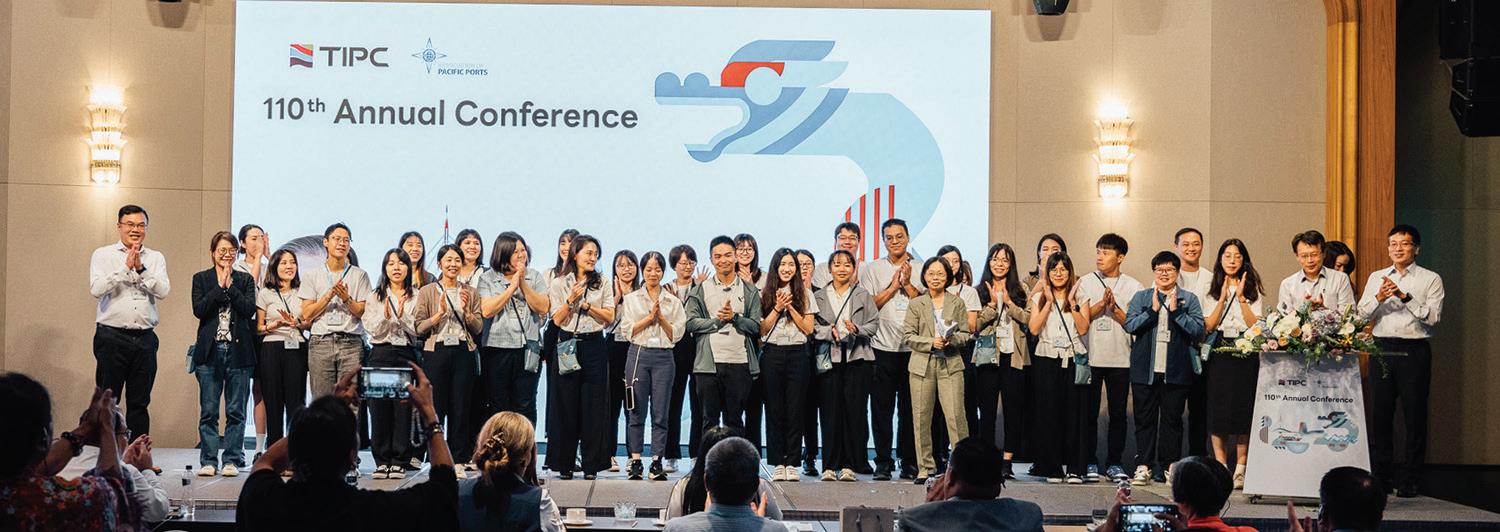






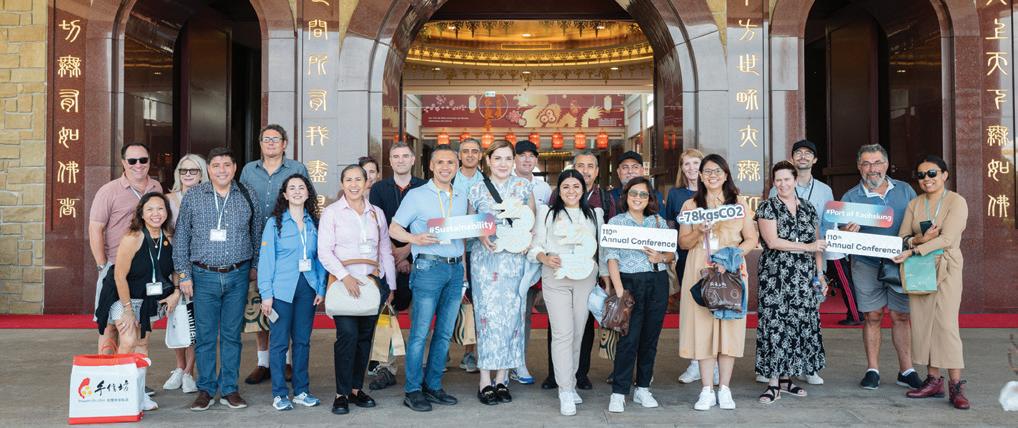

Acapulco (acapulco.com)
Port of Alaska (www.portofalaska.com)
American Samoa Port Administration (americansamoaport.as.gov/)
Port of Brookings Harbor, Oregon (www.portofbrookingsharbor.com)
Cabo San Lucas (visitloscabos.travel/)
Port of Chiapas (puertochiapas.com.mx)
Commonwealth Ports Authority, Northern Mariana Islands (www.cnmiports.com)
Port of Ensenada (puertoensenada.com.mx)
Port of Everett (portofeverett.com)
Fiji Ports Corporation Limited (https://fijiports.com.fj/)
General Coordination of Ports and Merchant Marine (www.gob.mx/puertossymarinamercante)
Port of Grays Harbor, Washington (www.portofgraysharbor.com)
Port Authority of Guam (www.portguam.com)
Port of Guaymas (puertodeguaymas.com.mx)
Port of Hualien, Taiwan International Ports Corporation, Ltd. (https://hl.twport.com.tw/)
Port of Hueneme, California (www.portofh.org)
Port of Kaohsiung, Taiwan International Ports Corporation, Ltd. (https://kh.twport.com.tw/en/)
Port of Keelung, Taiwan International Ports Corporation, Ltd. (https://kl.twport.com.tw/en/)
Port of Lázaro Cárdenas (puertolazarocardenas.com.mx)
Port of Long Beach, California (www.polb.com)
Port of Manzanillo (puertomanzanillo.com.mx)
Republic of Marshall Islands (RMI) Ports Authority, Marshall Islands
Port of Mazatlán (puertomazatlan.com.mx)
Nanaimo Port Authority, BC, Canada (www.npa.ca)
Port of Newport, Oregon (www.portofnewport.com)
Pohnpei Port Authority, Micronesia (www.ppa.fm)
Port Alberni Port Authority, BC, Canada (https://portalberniportauthority.ca/)
Port of Redwood City, California (www.redwoodcityport.com)
Port of Salina Cruz (puertosalinacruz.com.mx)
Port of San Diego, California (www.portofsandiego.org)
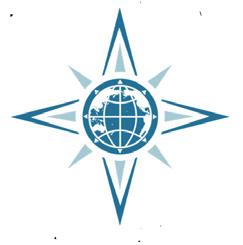
Port of Skagit, Washington (www.portofskagit.com)
Port of Stockton, California (www.portofstockton.com)
Port of Taichung, Taiwan International Ports Corporation, Ltd. (https://tc.twport.com.tw/en/)
Ports Authority Tonga (www.portsauthoritytonga.com)
Port of Topolobampo (puertotopolobampo.com.mx)
Port of Umatilla, Oregon (https://portofumatilla.org/)
Port of Valdez, Alaska (https://www.valdezak.gov/151/Port)
Puerto Vallarta (puertovallarta.com.mx)
ADELTE Ports & Maritime (www.adelte.com)
Albion Marine Solutions (albionmarine.com)
AM Insurance (www.amibrokers.com)
The Beckett Group (www.thebeckettgroup.org)
Best Best & Krieger Attorneys at Law (www.bbklaw.com)
Burns & McDonnell (www.burnsmcd.com)
Business Oregon (www.oregon.gov/biz/)
EA Engineering, Science and Technology, Inc. (www.eaest.com)
Federated Shipping Company
FortisBC (www.fortisbc.com)
Harman Kemp North America Limited (www.hknal.com/)
Kongsberg Maritime Canada Ltd. (www.kongsberg.com)
Law Office of Alan K. Goldstein (www.alankgoldsteinlaw.com)
Liebherr USA, Co. (www.liebherr.com)
Liftech Consultants (www.liftech.net)
Lynker (www.lynker.com)
Majuro Stevedore & Terminal Company, Inc.
Marine Labs Data Systems Inc. (www.marinelabs.io/)
Maritime and Port Bureau, Taiwan (www.motcmpb.gov.tw)
Matson (www.matson.com)
Pacific Coast Intermodal Port (pcipproject.com)
The Pasha Group (https://www.pashagroup.com)
Reid Middleton, Inc. (www.reidmiddleton.com)
Schrader Co. Sales, LLC (www.schraderco.com)
Shey-Harding Associates (www.shey-harding.com)
Seen Safety Inc. (www.seensafety.com)
SSA Marine (www.ssamarine.com)
Trans Mountain (www.transmountain.com)
Truk Transportation
Tynebridge Solutions Inc. (www.tynebridge.ca)
Vector Corrosion Technologies (vector-corrosion.com)
Western Wood Preservers Institute (www.wwpinstitute.org)
Association of BC Marine Industries (abcmi.ca)
Green Marine (https://green-marine.org/)
Inland Rivers, Ports & Terminals Association (https://www.irpt.net/)
Interferry (www.interferry.com)
International Association of Maritime and Port Executives (www.iampe.org)
Pacific Coast Congress of Harbormasters & Port Managers (www. pccharbormasters.org)

